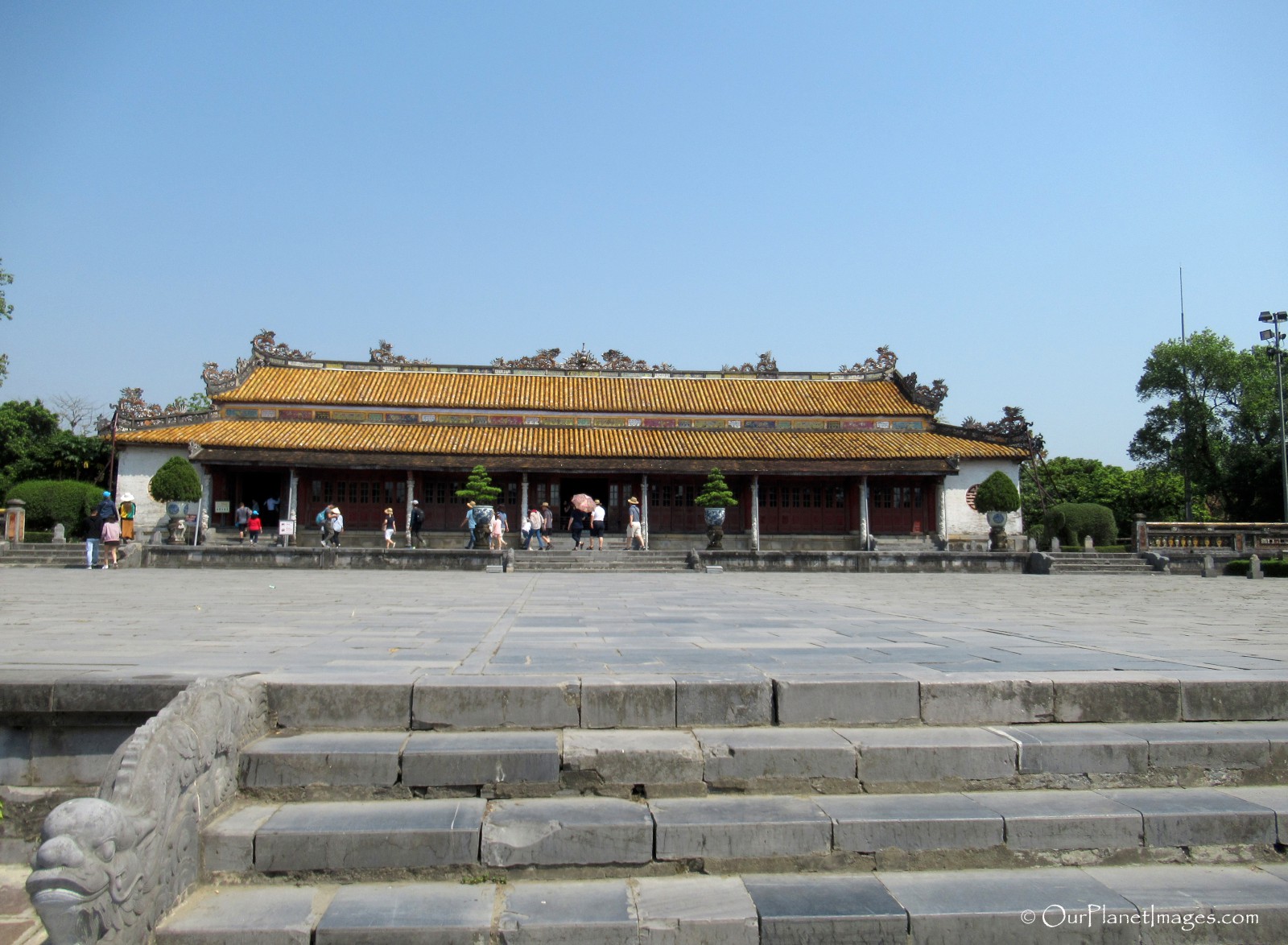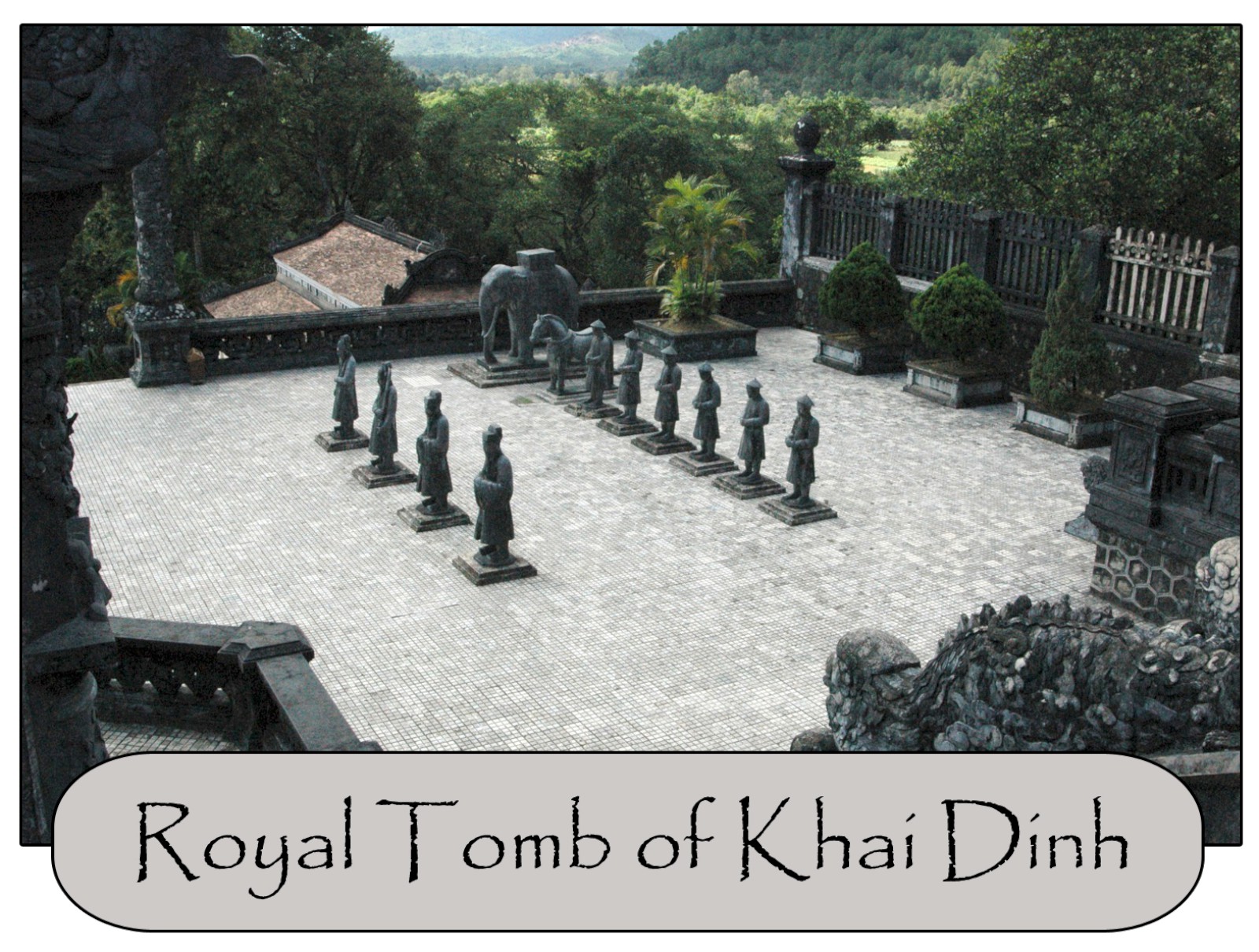The Hue Citadel and Imperial Palace is where the nine (9) Nguyen Kings of the Nguyen Dynast lived and ruled the country. The walled complex is located on the north bank of the Huong River (aka the Perfume River) in the city of Hue, Vietnam. The construction was started in 1802 and was completed 31 years later in 1833. In 1993 the Hue Citadel and Imperial Palace was recognized as a UNESCO World Heritage Site.
Ngo Mon Gate (Moon Gate)
The Moon Gate is the main gate to the imperial city and this is the entrance that most tourists use to enter the complex. This gate is a massive structure with five entrances that pass through the thick stone defensive wall. Three rectangle shaped entrances in the center and one entrance with rounded top on each side of the three rectangle shaped entrances.
Above the wall is an observation deck that served as a royal viewing platform for court ceremonies. The first two photos below are of the exterior portion of the gate and the other three photos are of the observation deck.
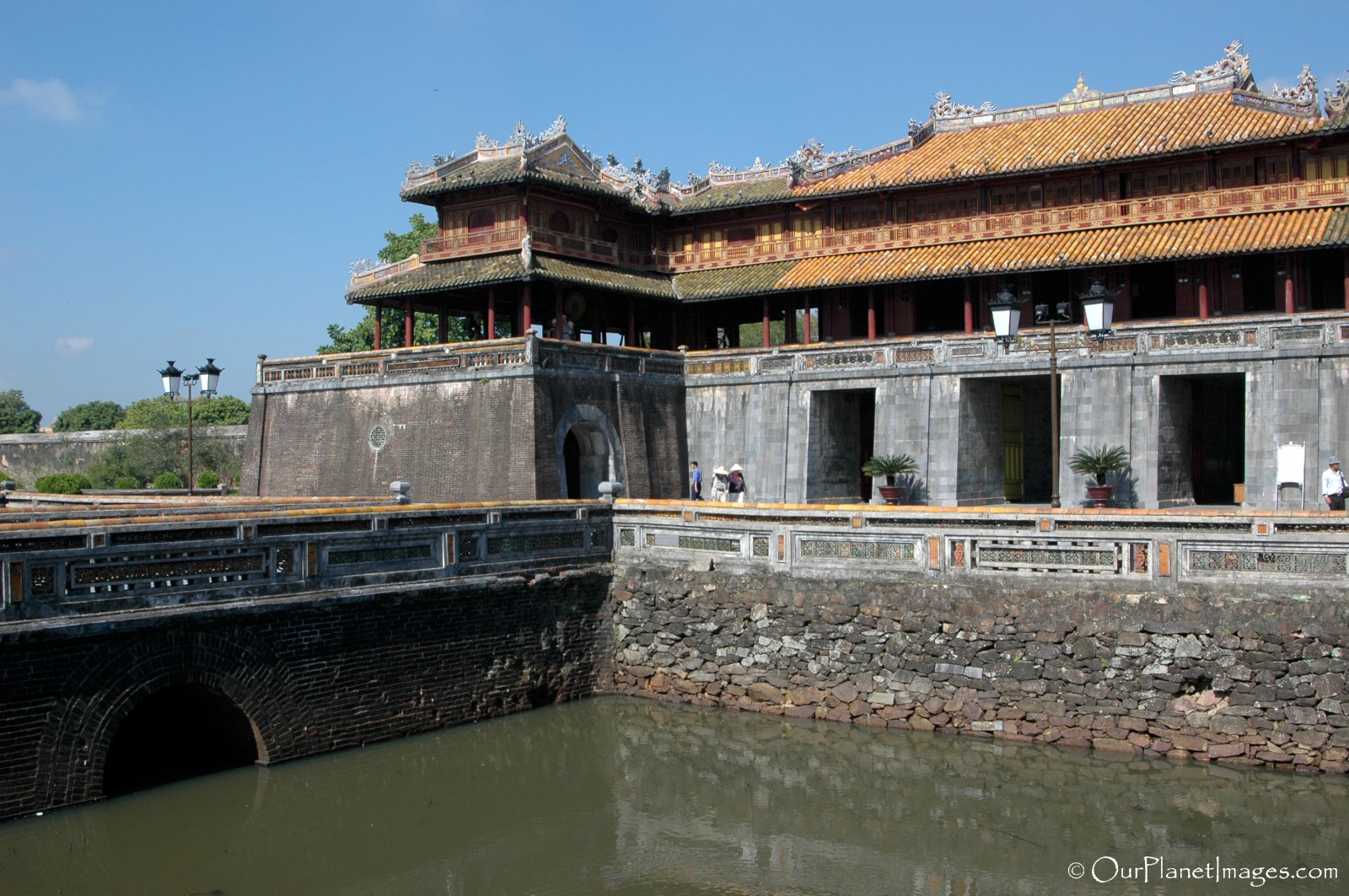
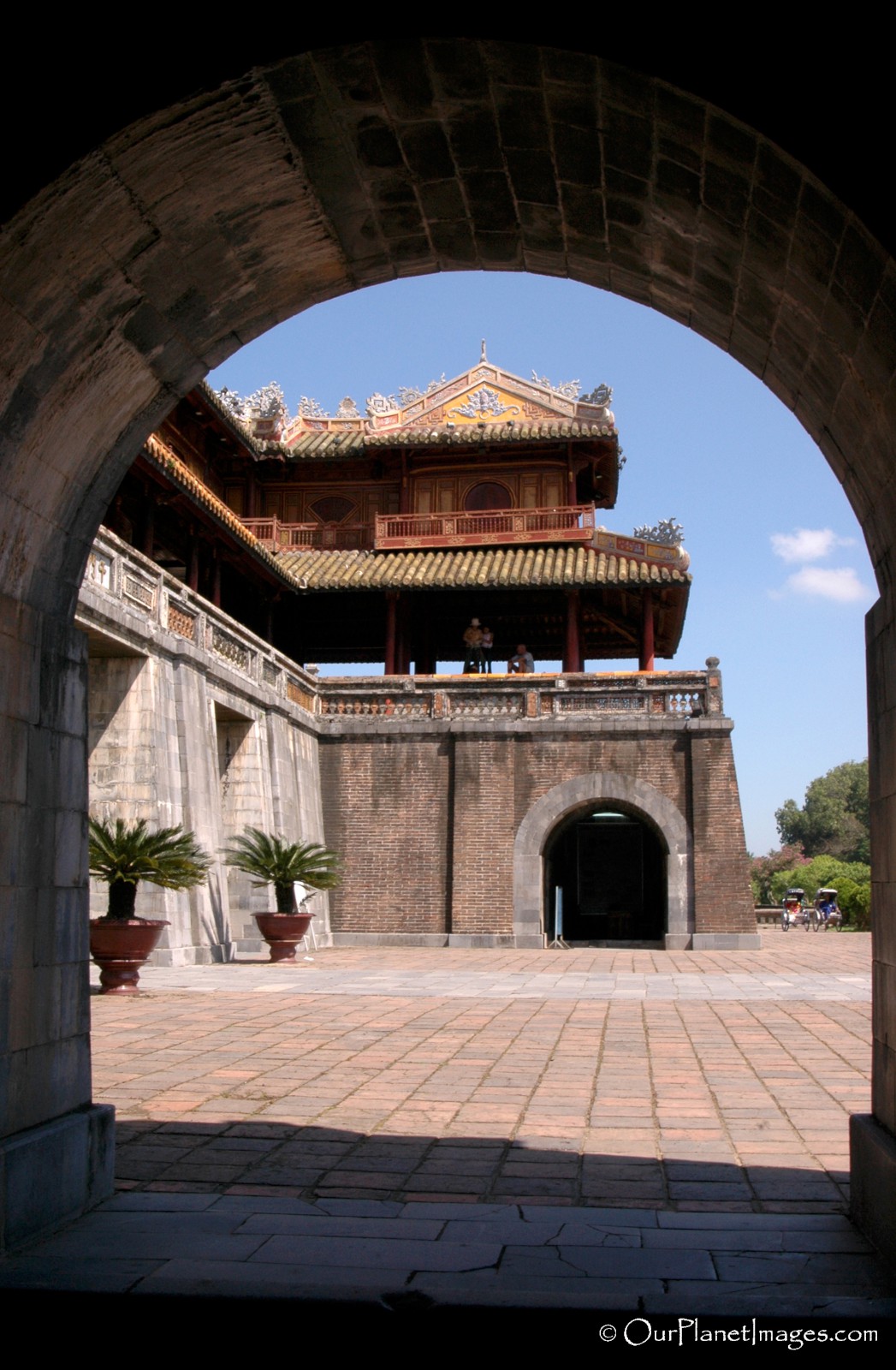
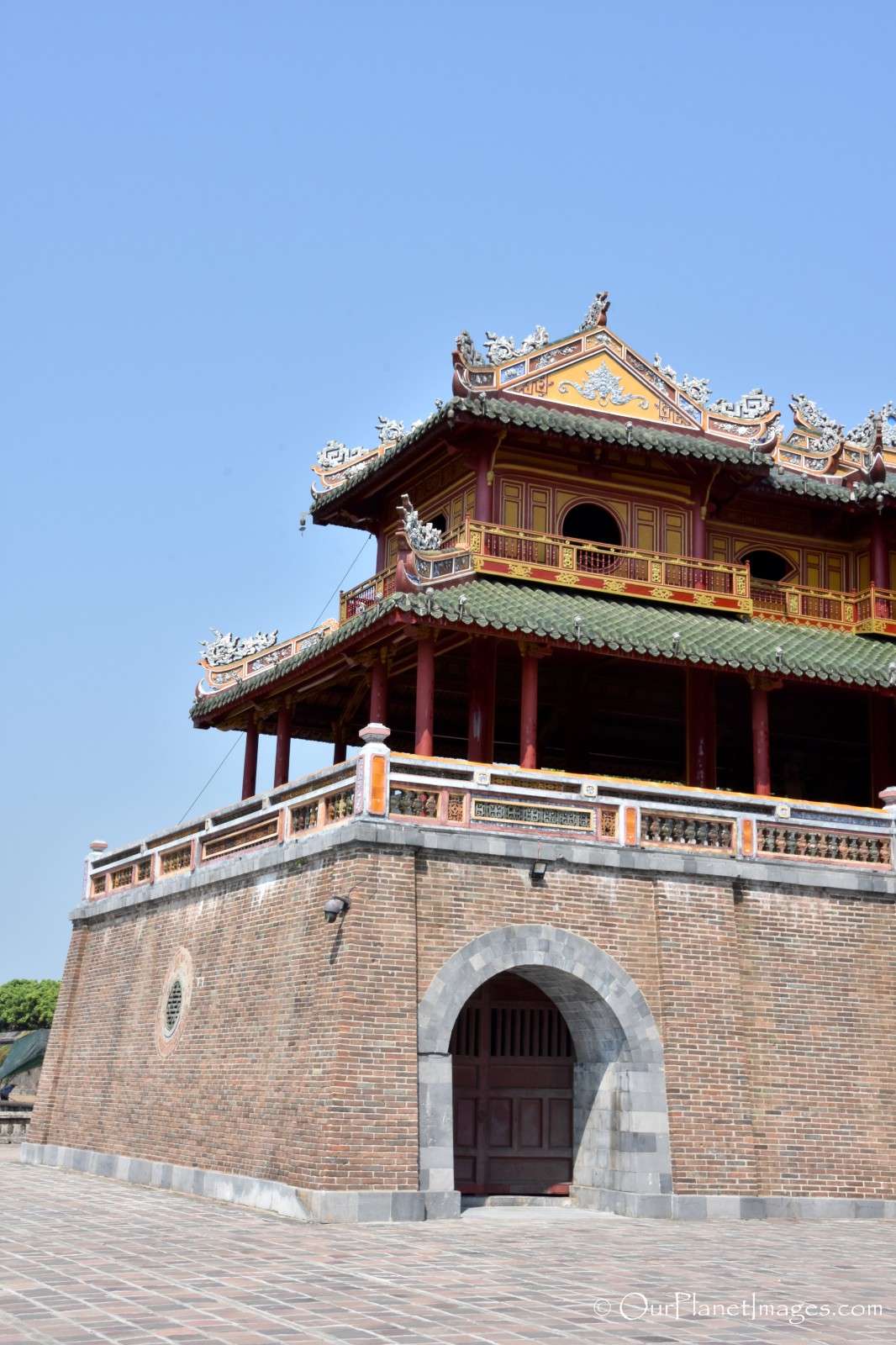
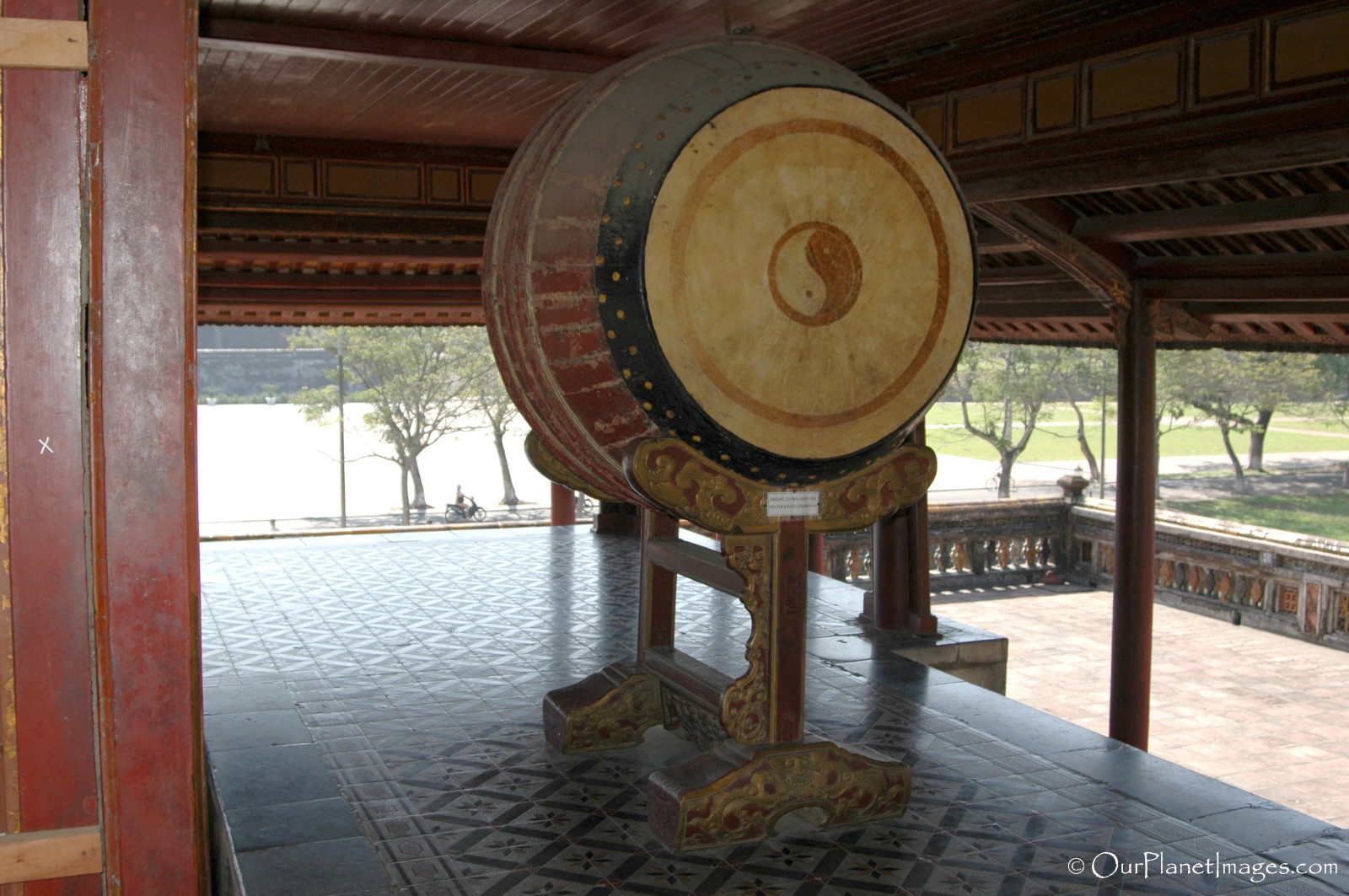
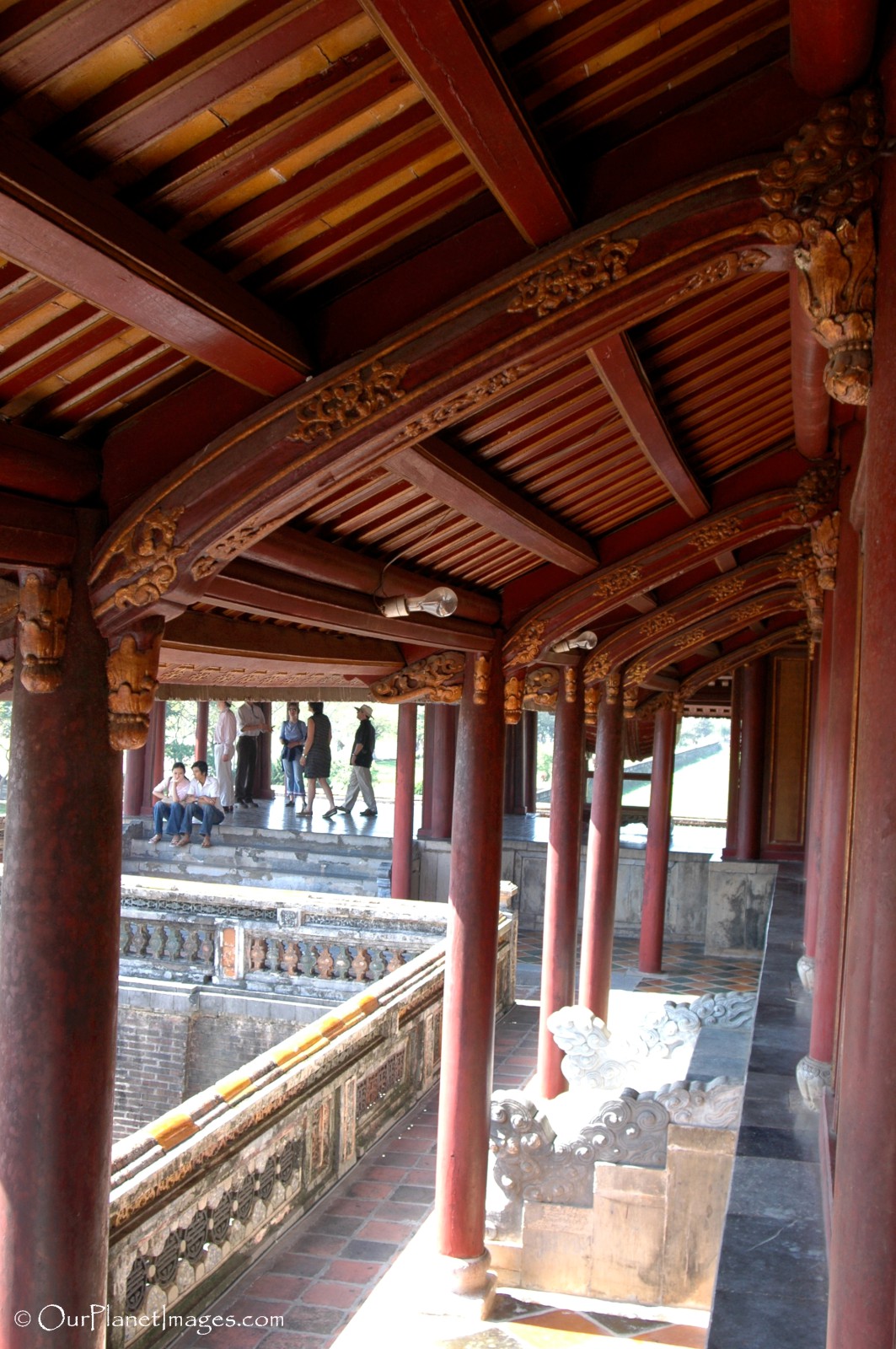
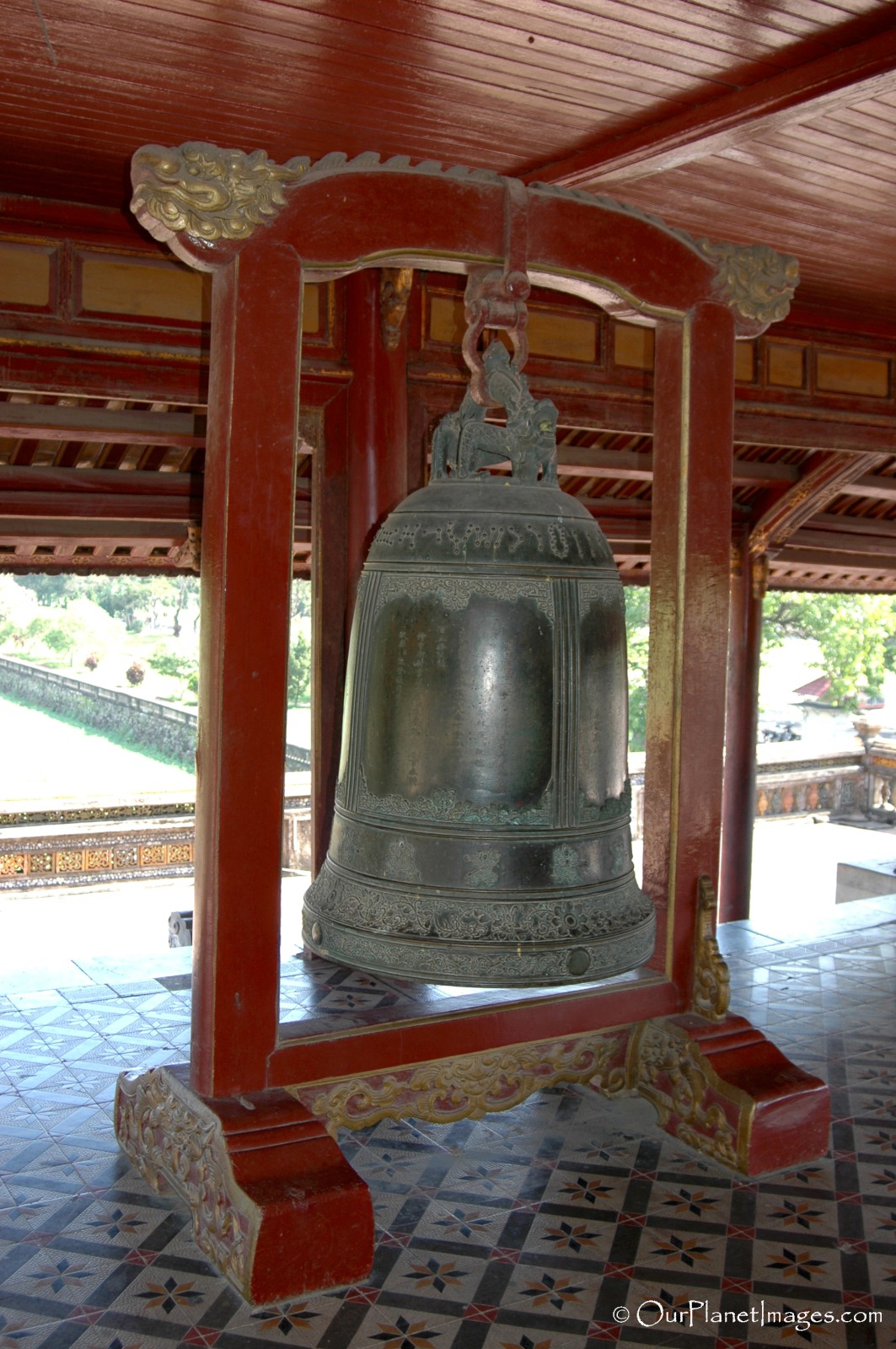
Moat
The entire complex is completely surrounded by a defensive moat which provides a water barrier outside of the 12 foot high defensive wall.
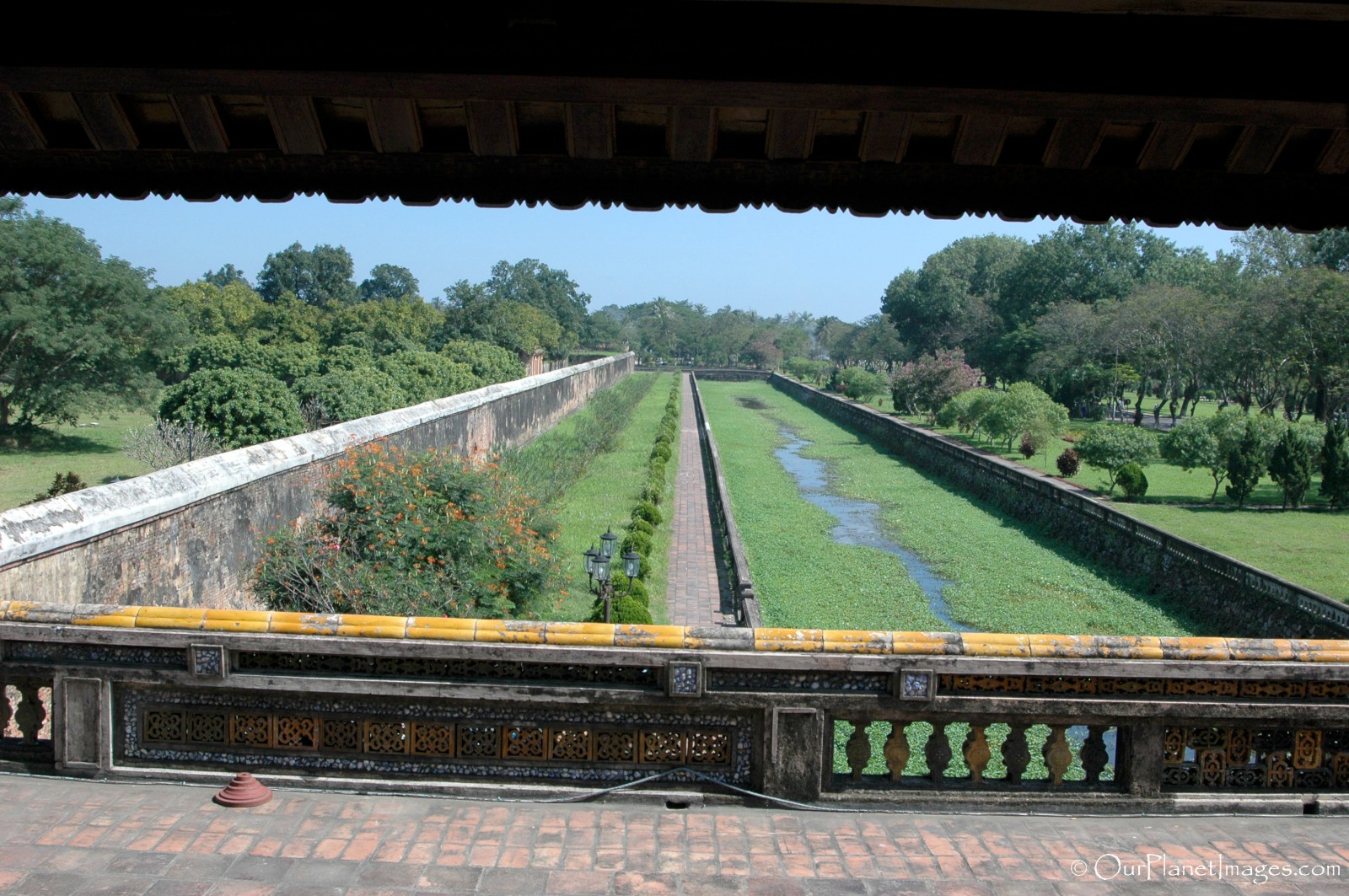
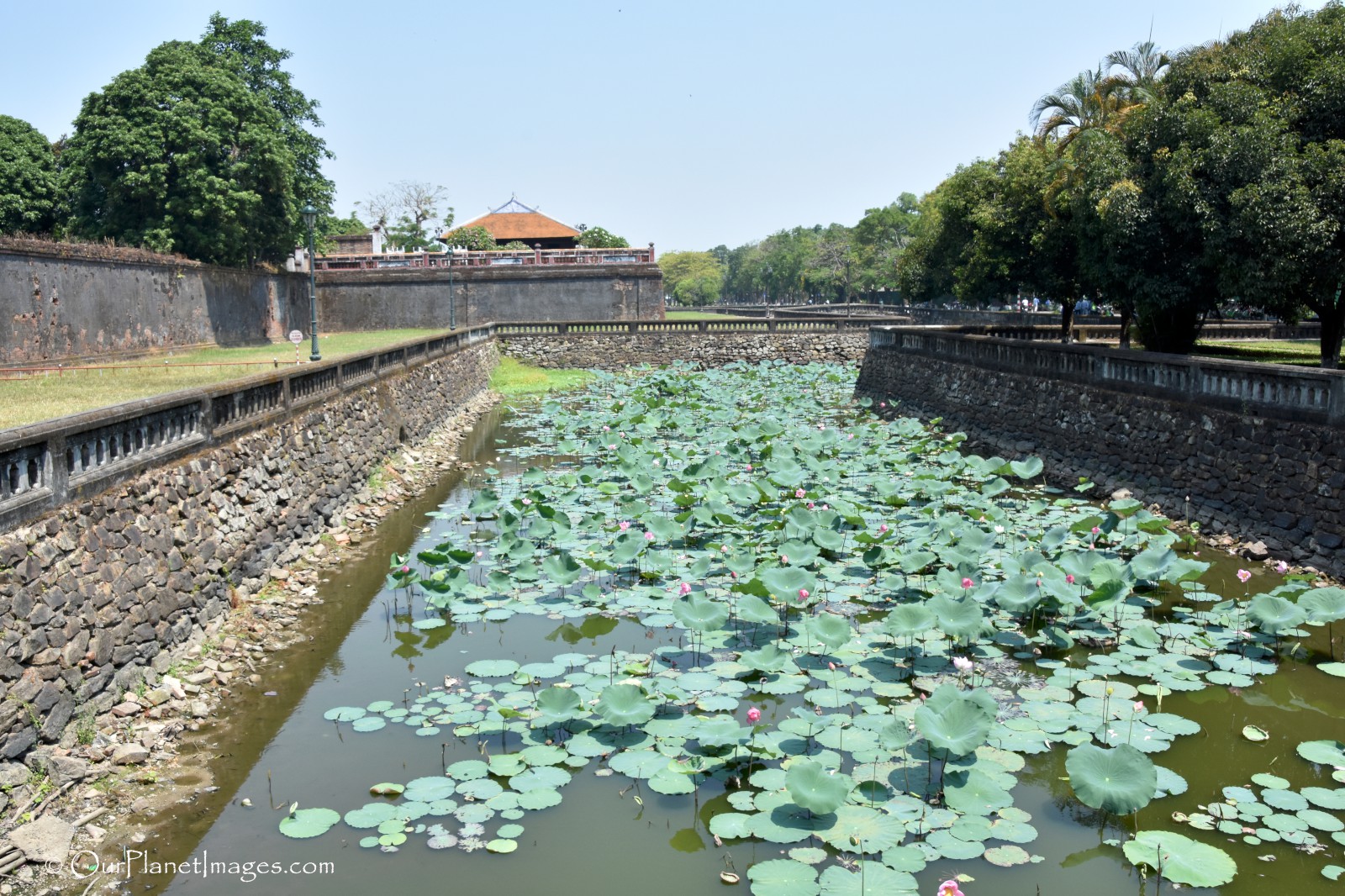
Flag tower
Outside of the complex walls and directly in front of the Ngo Mon Gate is the massive flag tower with the Vietnamese national flag secured to the top of the three level flat-top pyramid shaped structure.

Thai Dich Pond
After passing through the Ngo Mon Gate and entering the Citadel complex, the Thai Hoa Palace (Throne Palace) sits directly in line with the Ngo Mon Gate along the central axis of the Imperial City.
The Throne Palace can be reached by walking across the Trung Dao Bridge that crossed the Thai Dich pond.
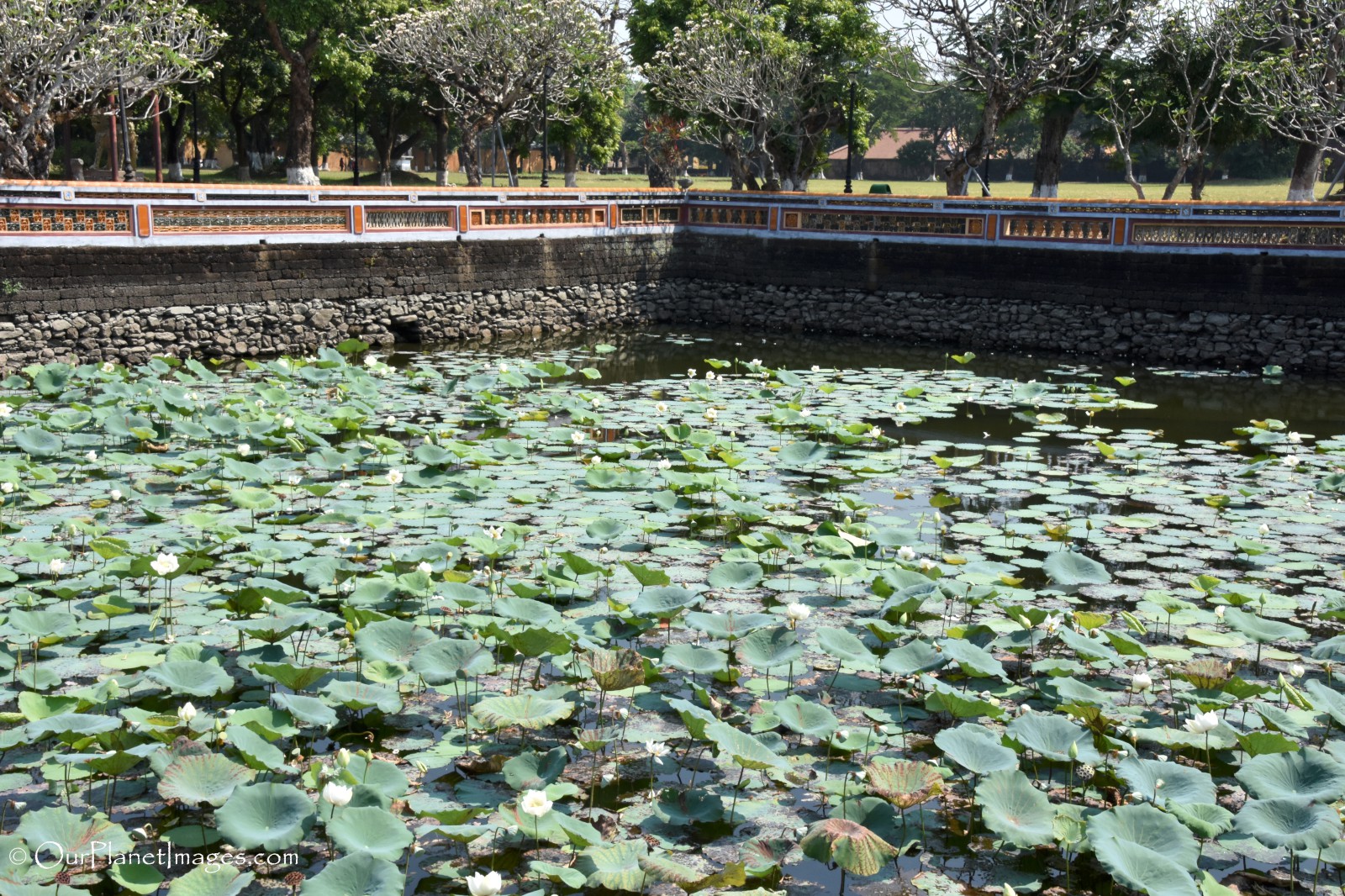
Thai Hoa Palace
Immediately after crossing the Trung Dao Bridge and passing under a small gate which marks the entrance into the Court of Great Rites (courtyard). The courtyard is a large plaza in front of the Thai Hoa Palace that was used for the most important ceremonies such as coronation of emperors and crown princes, and the reception of foreign ambassadors. The Thai Hoa Palace is 44 meters long, 30 meters wide and almost 12 meters high.

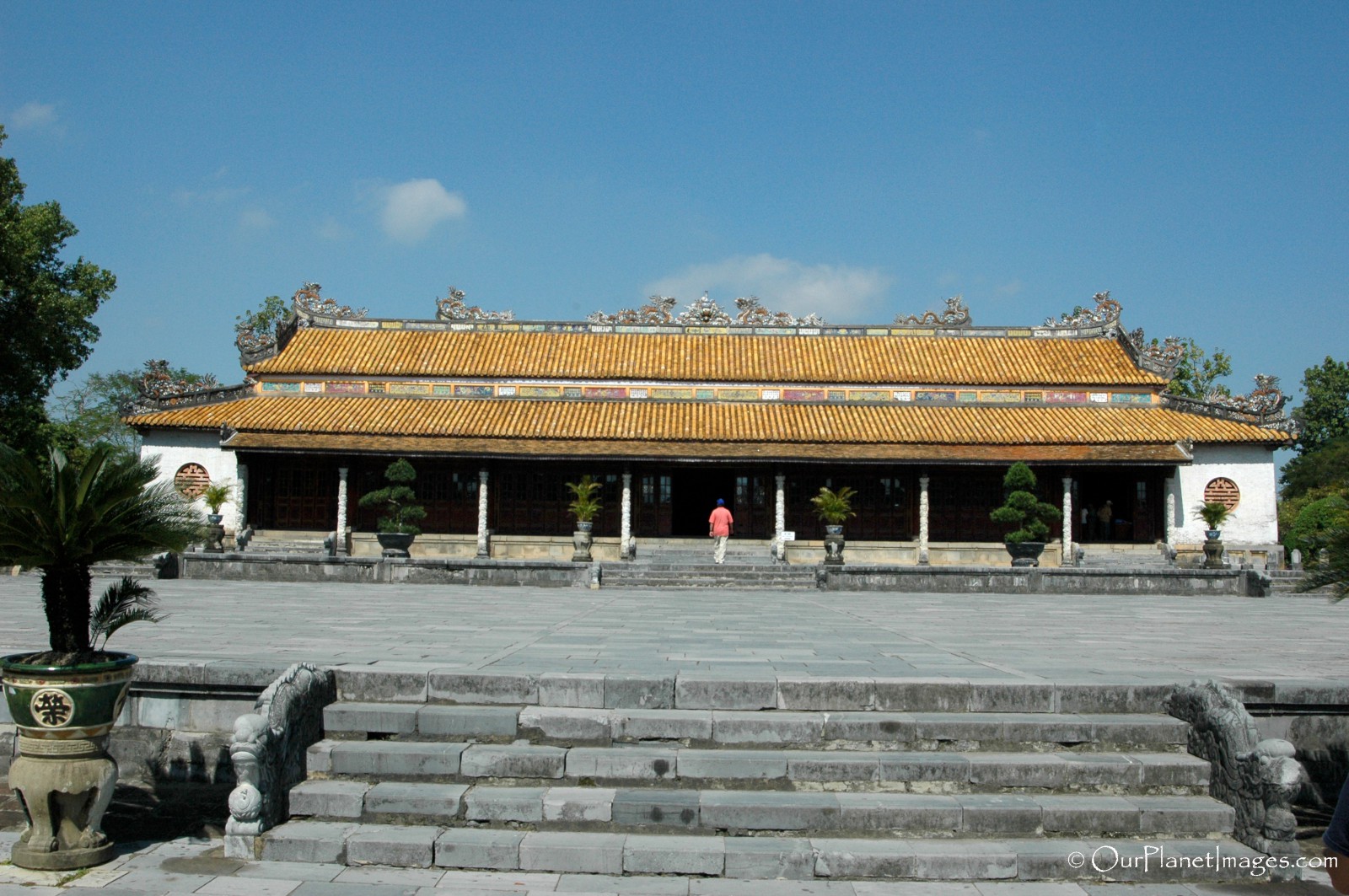
The Mandarin Buildings
Behind the Thai Hoa Palace is another plaza that is flanked by two Mandarin building that were used as offices for Imperial civil servants.
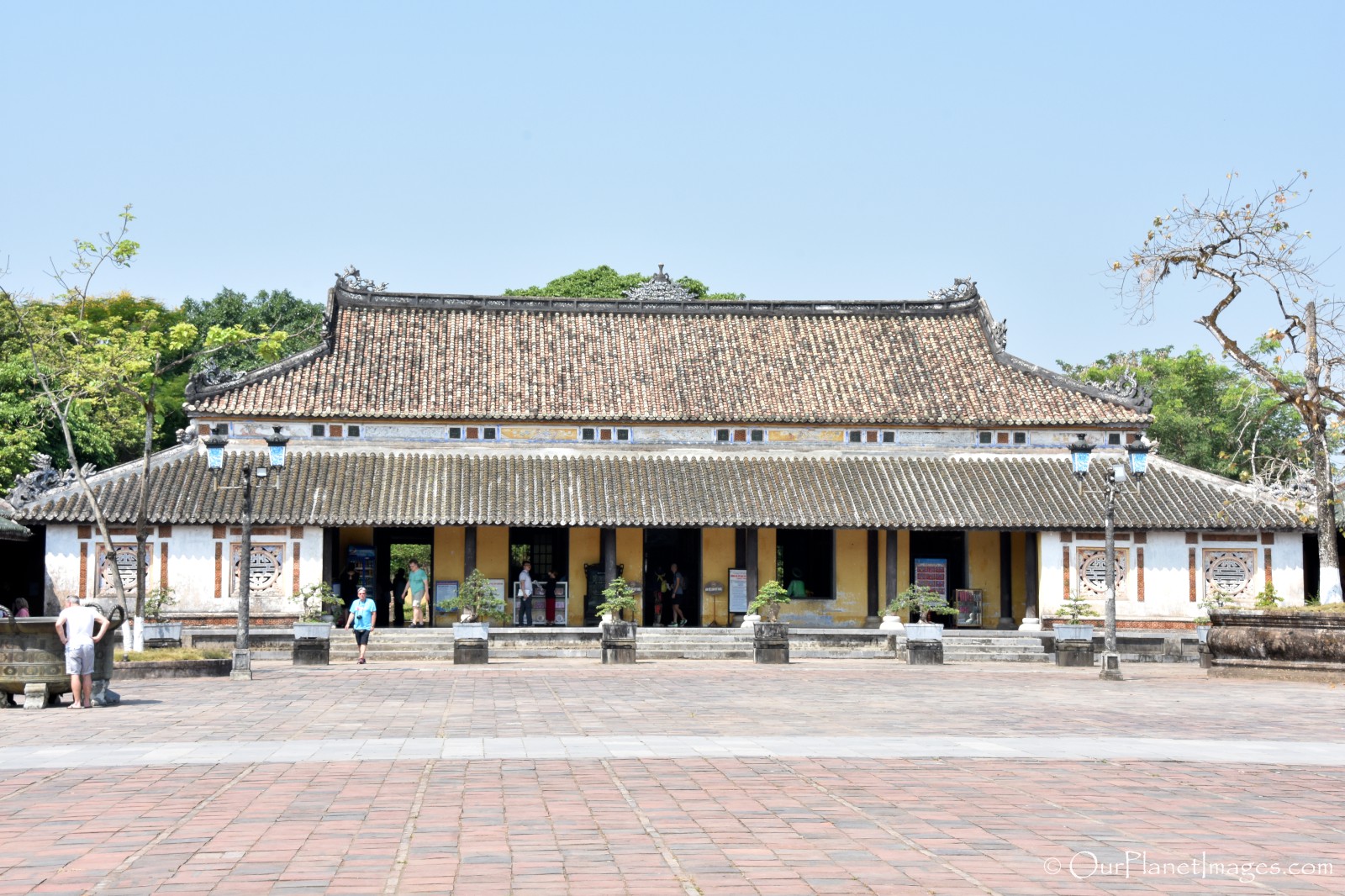
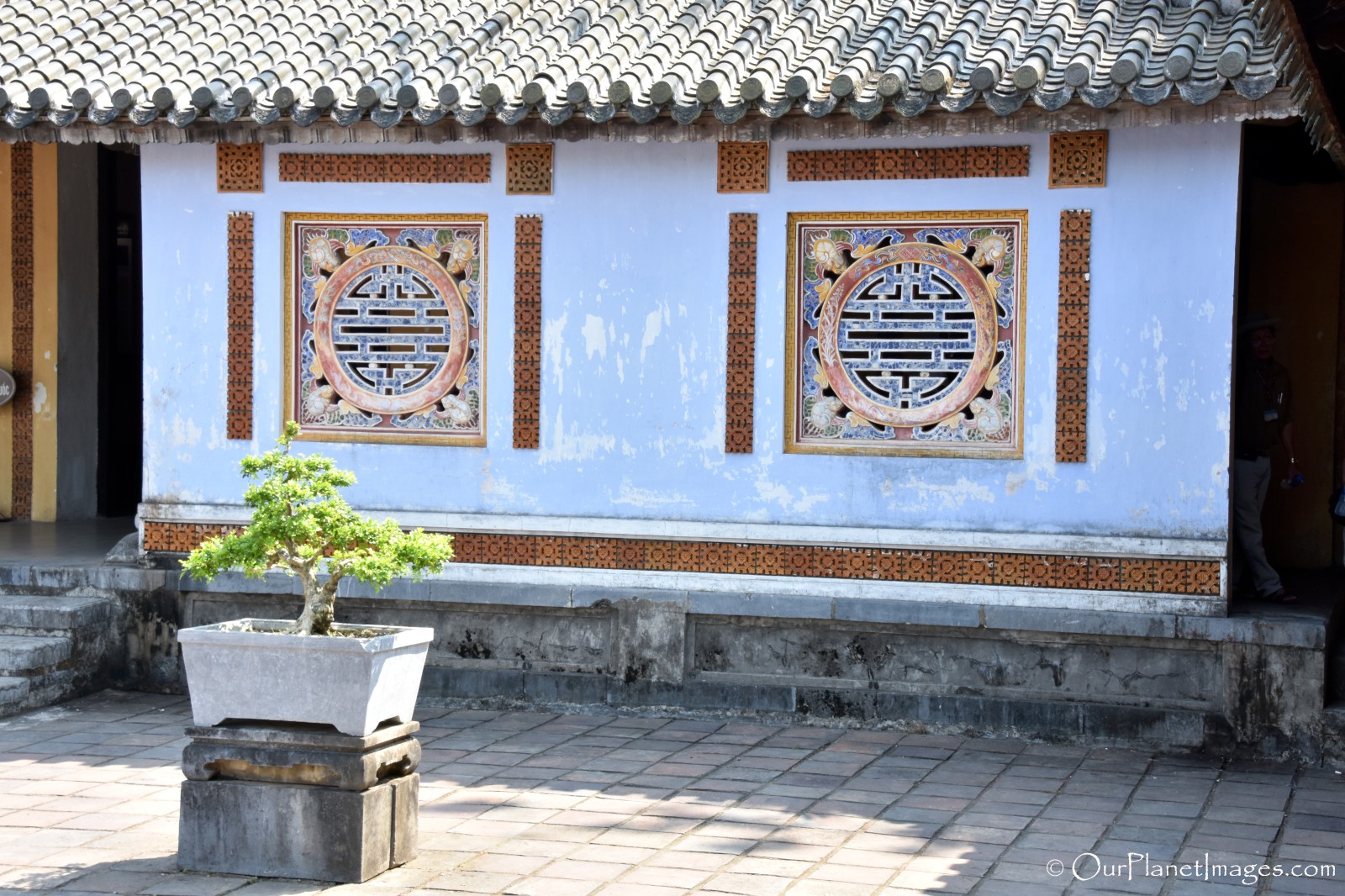
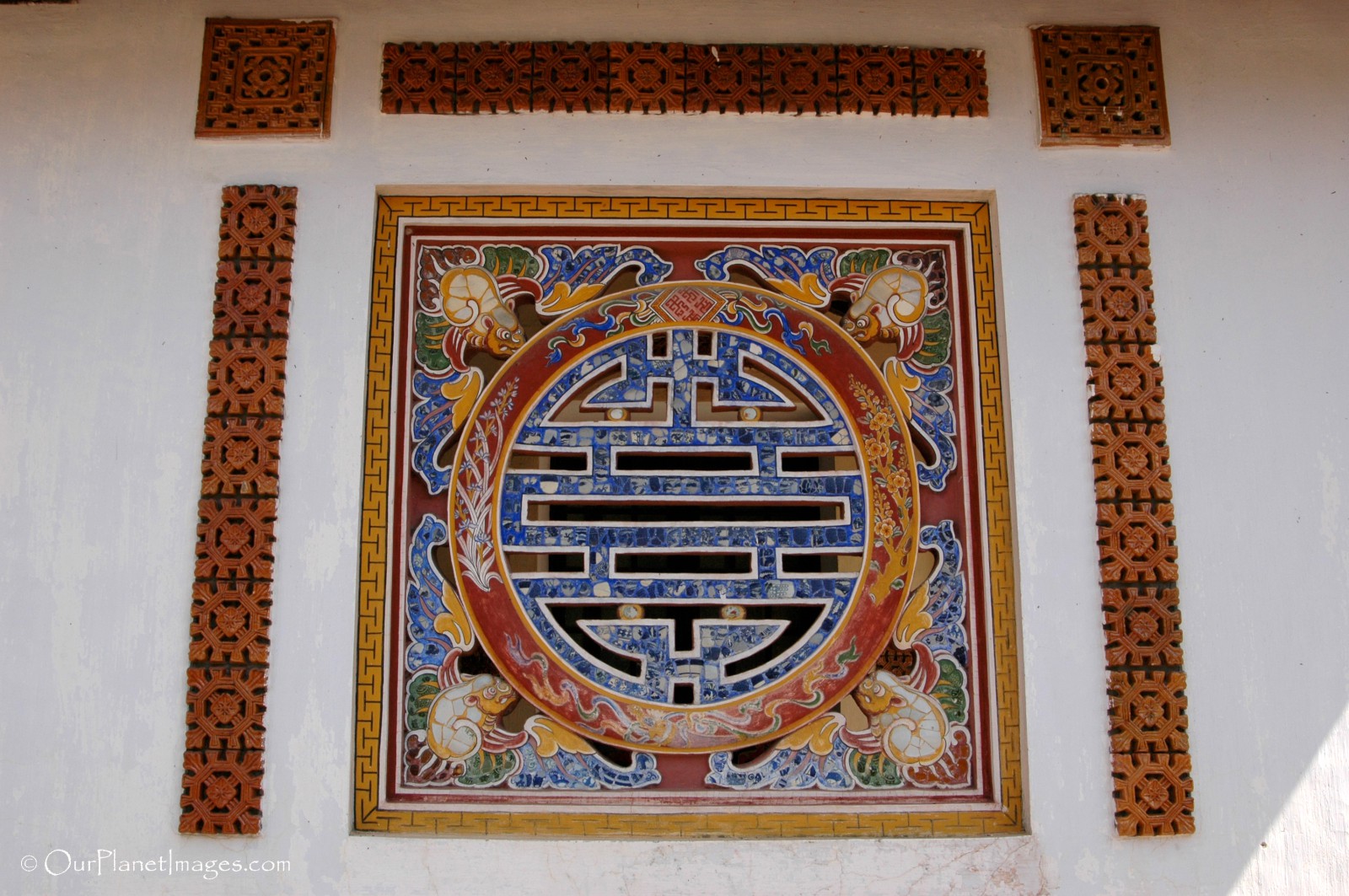
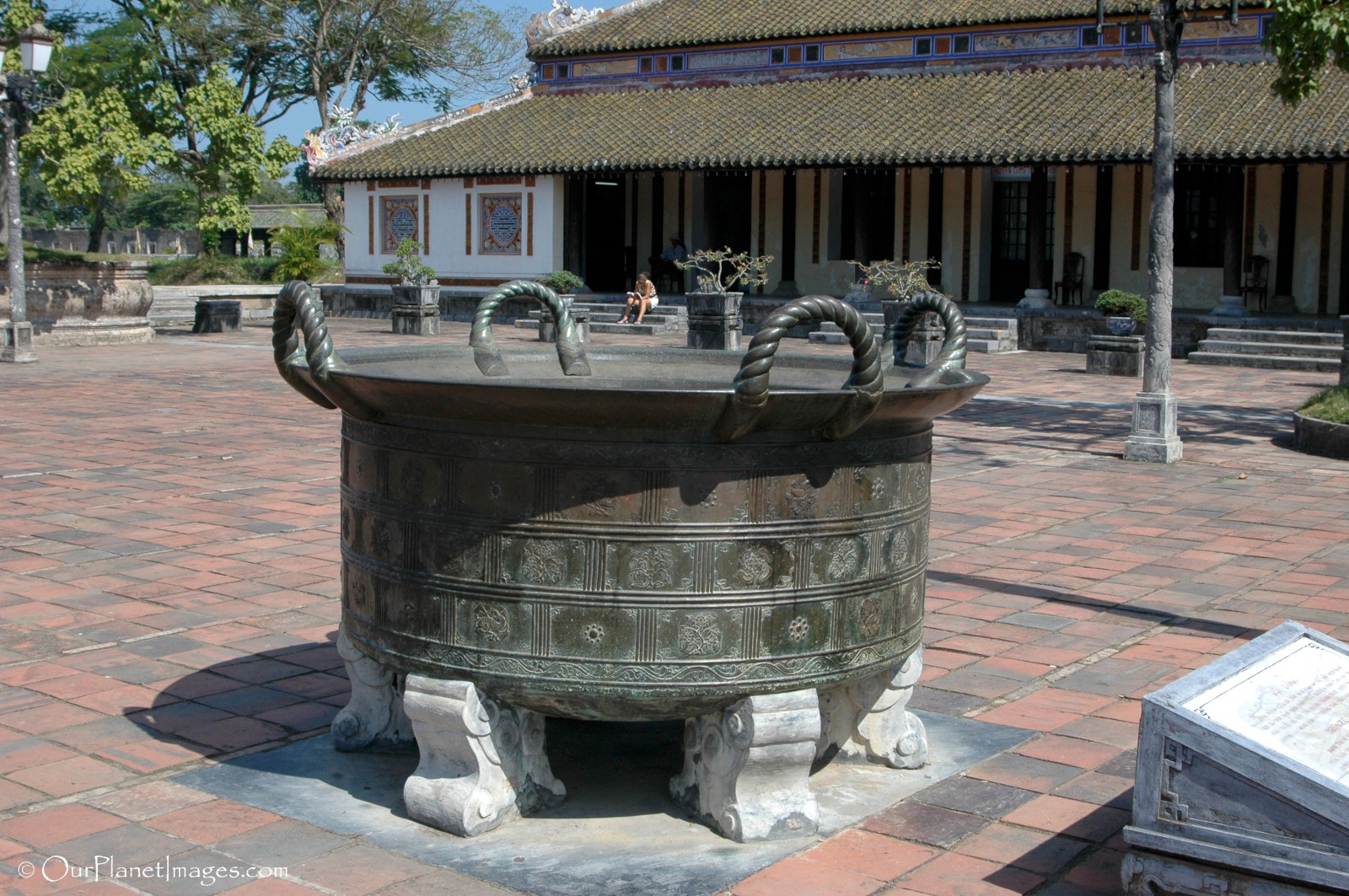
Hall of the Mandarins
Alongside of each Mandarin Building is a long hall with an open field between the two halls. These halls are the Halls of the Mandarins. These two hall look very similar but one hall has brown support columns and ceiling structures while the other hall has red support columns and ceiling structures.
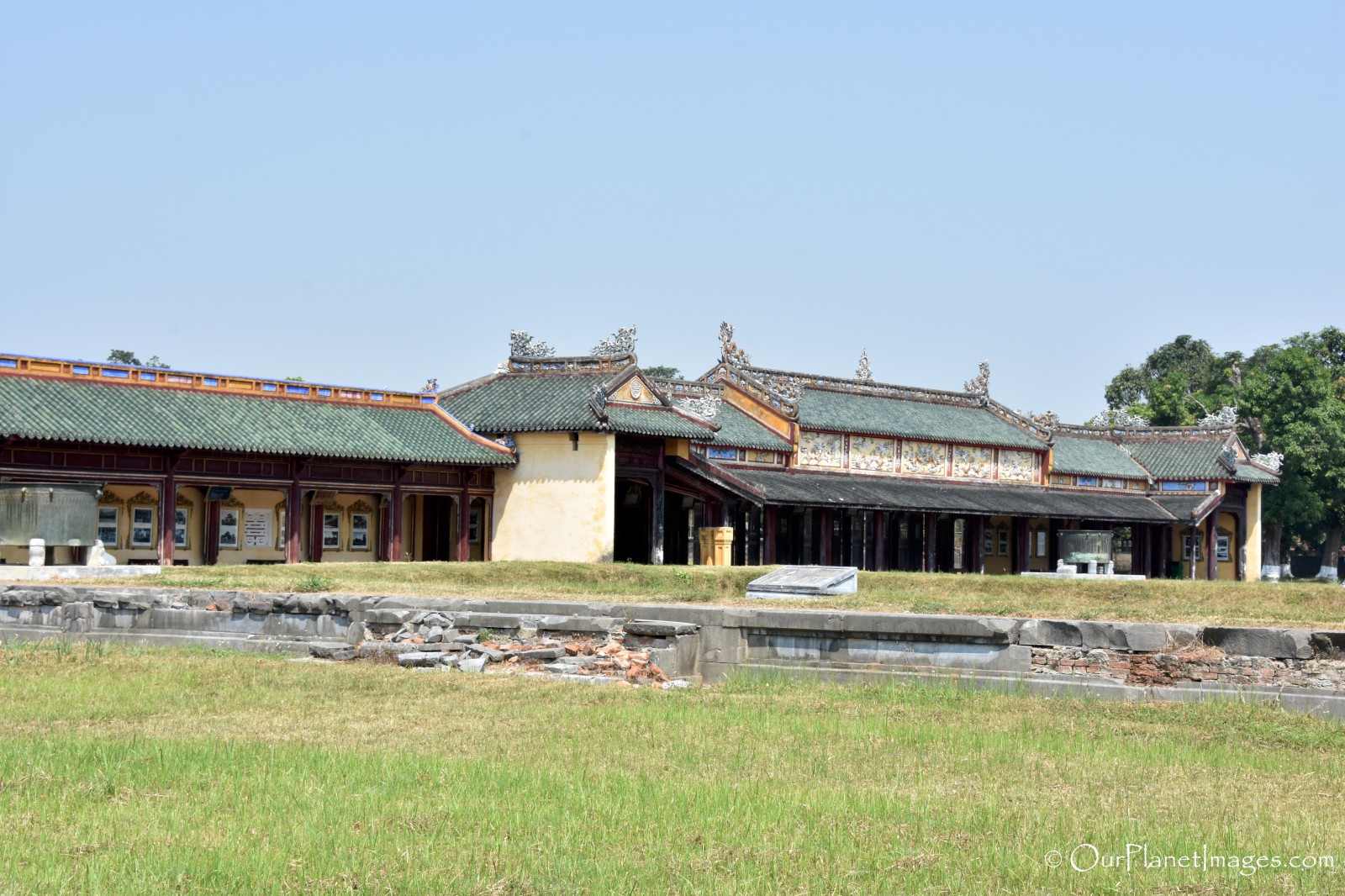
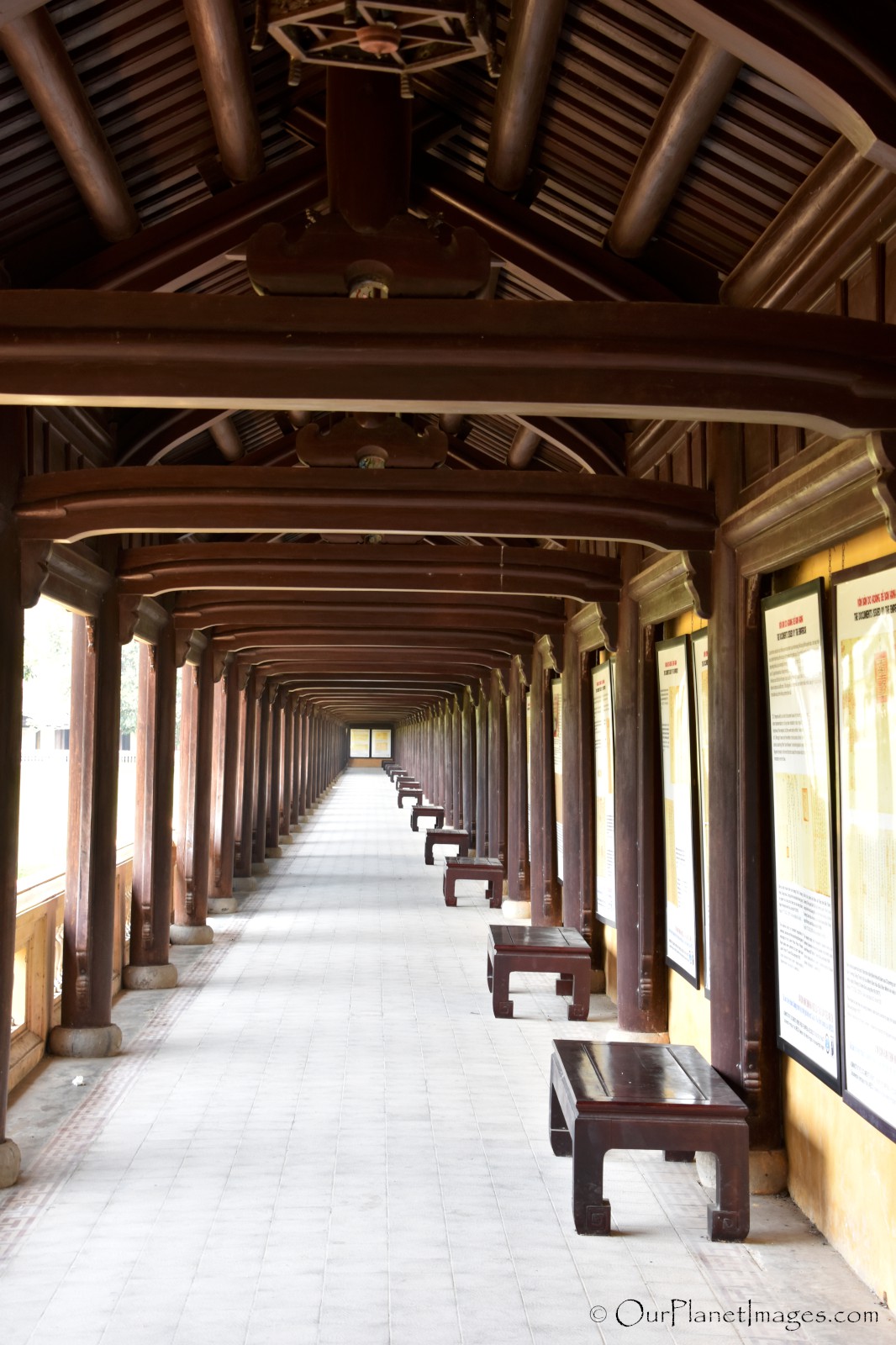
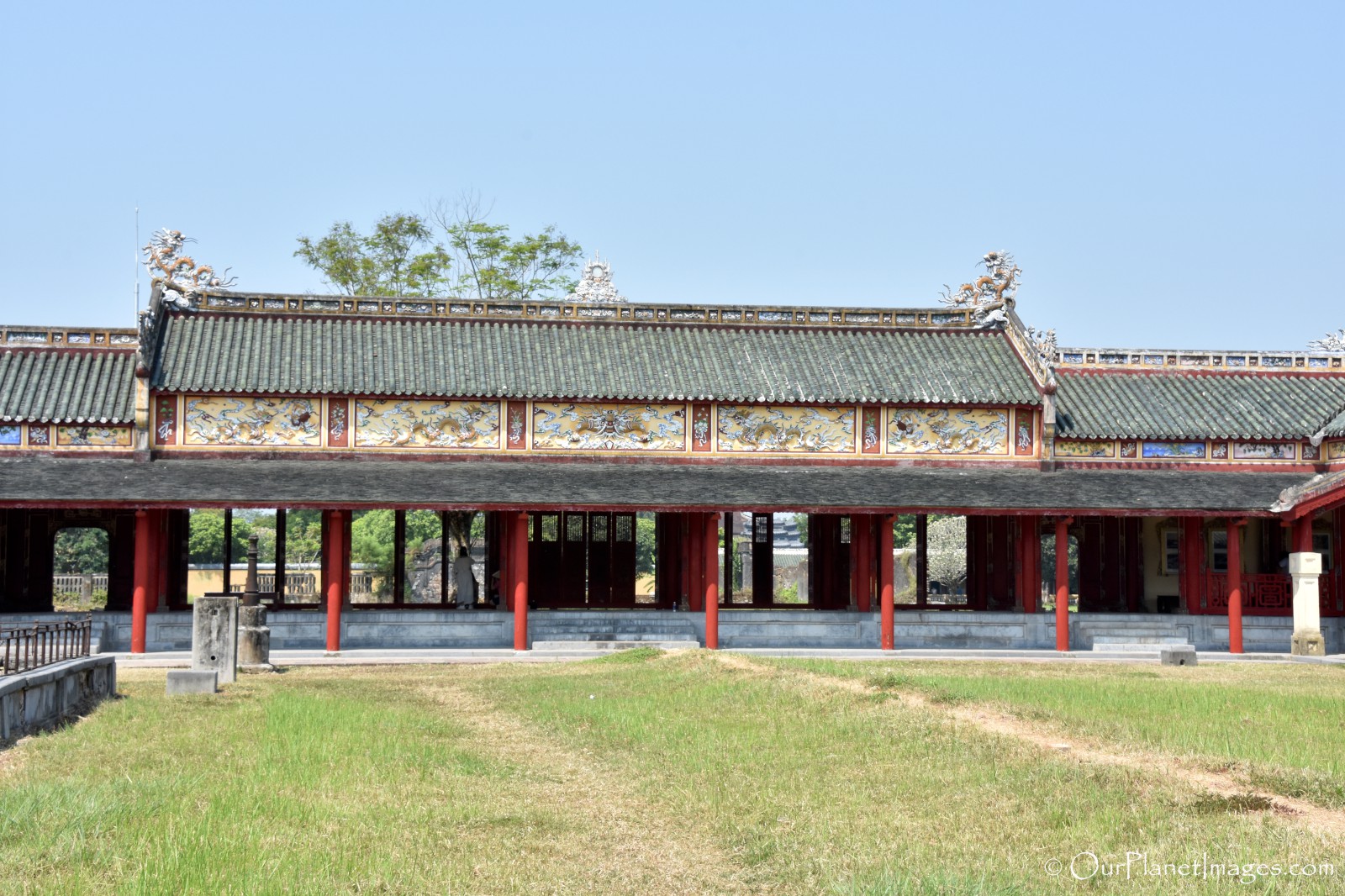
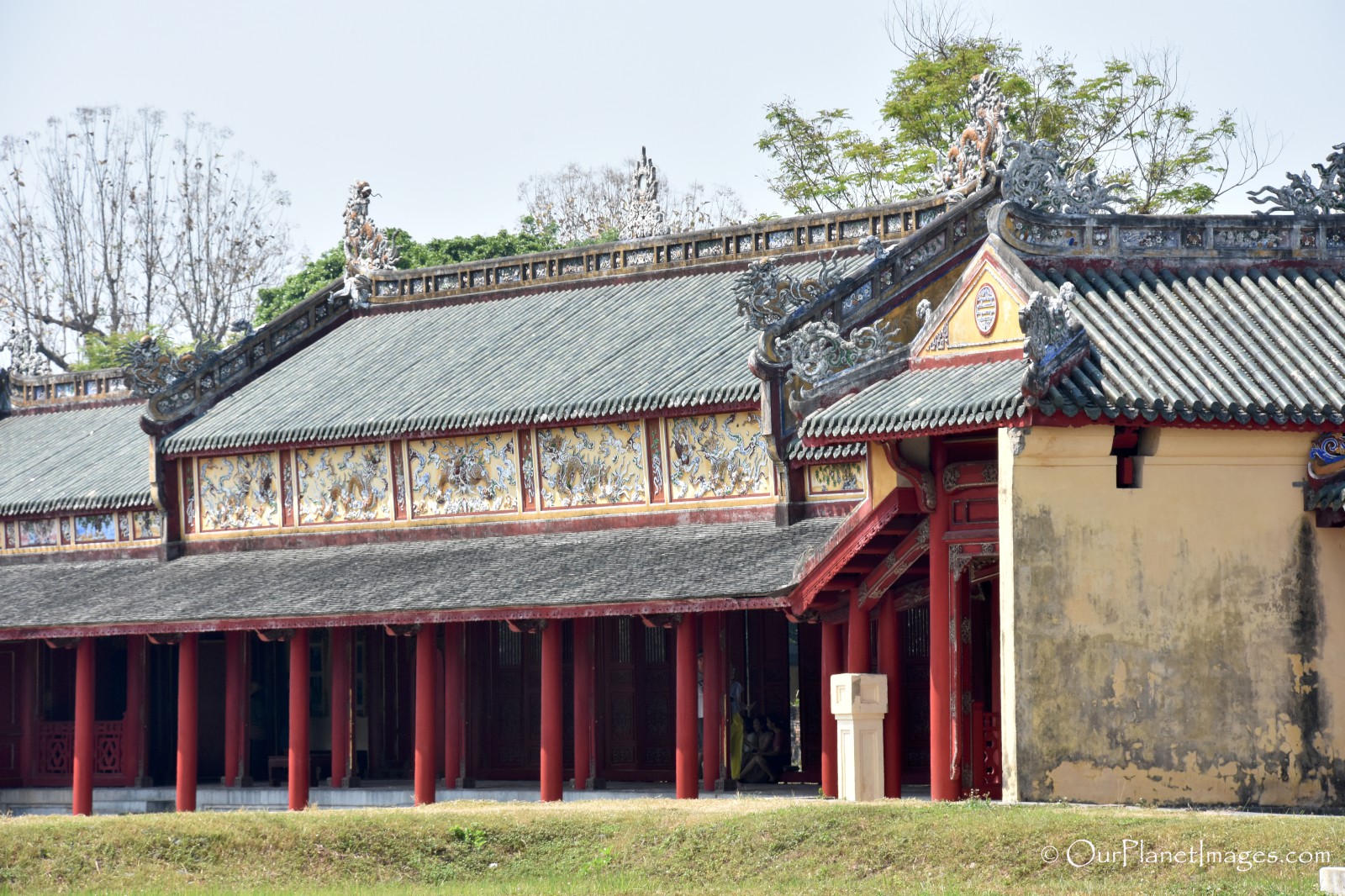
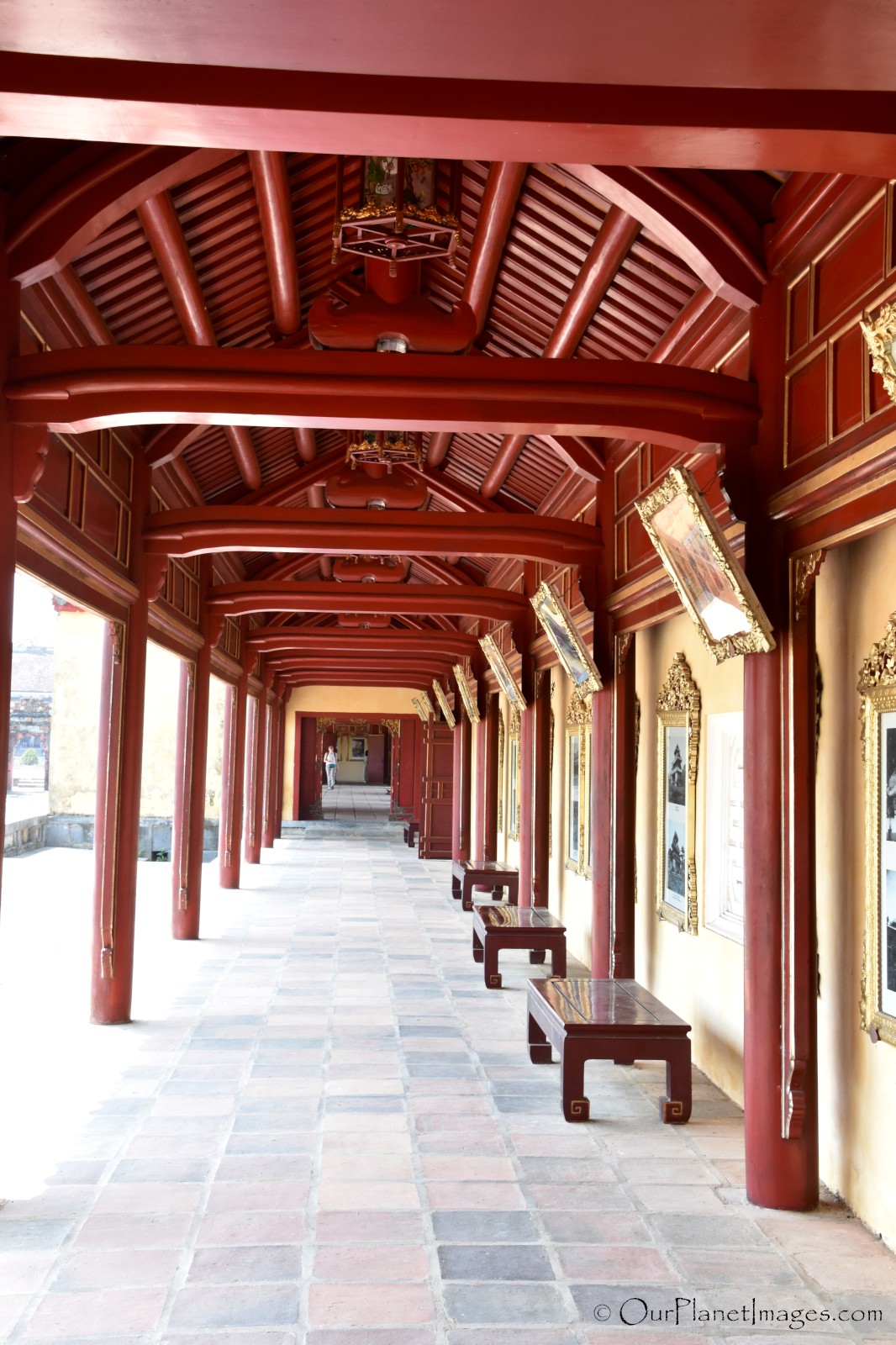
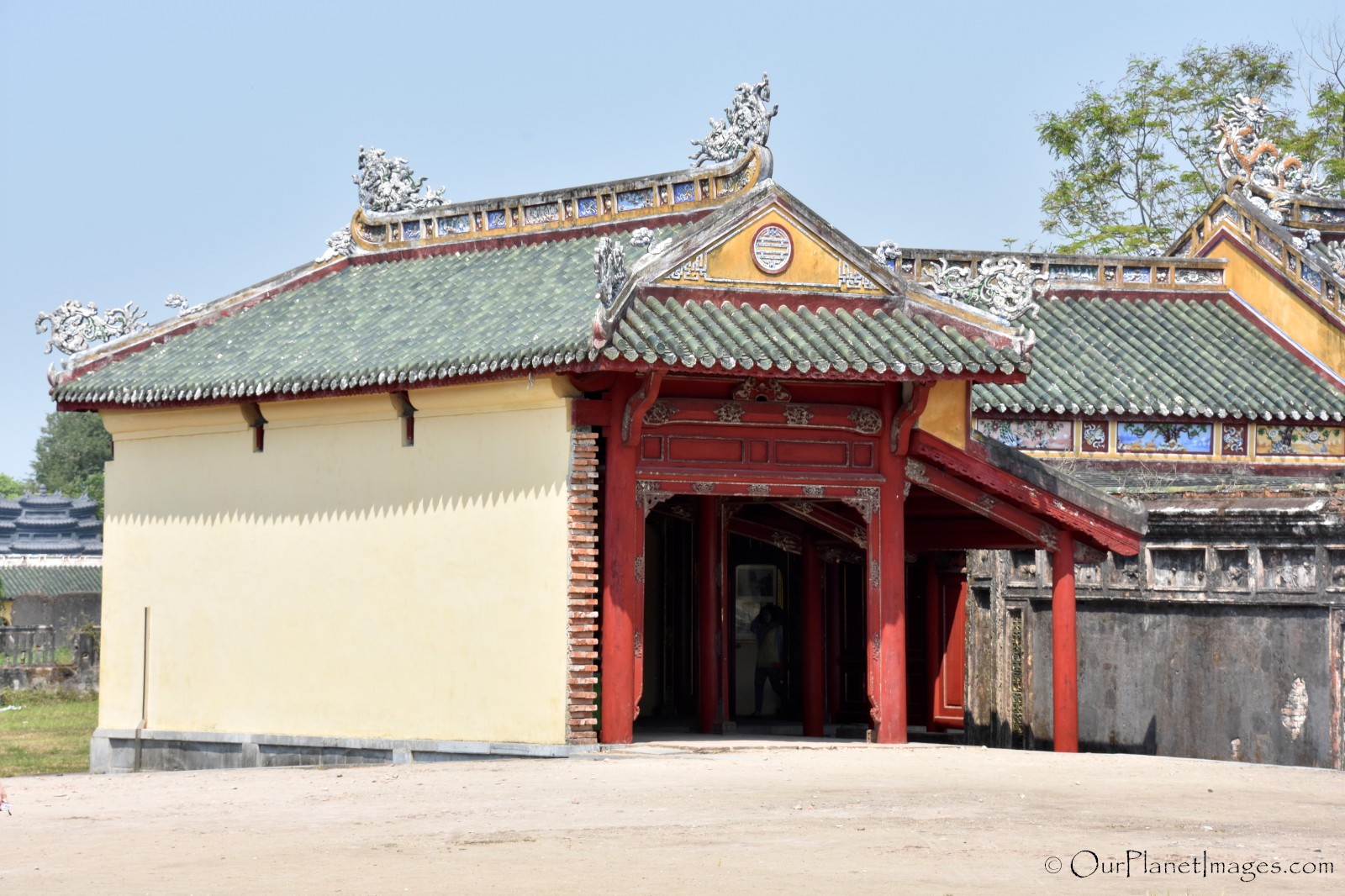
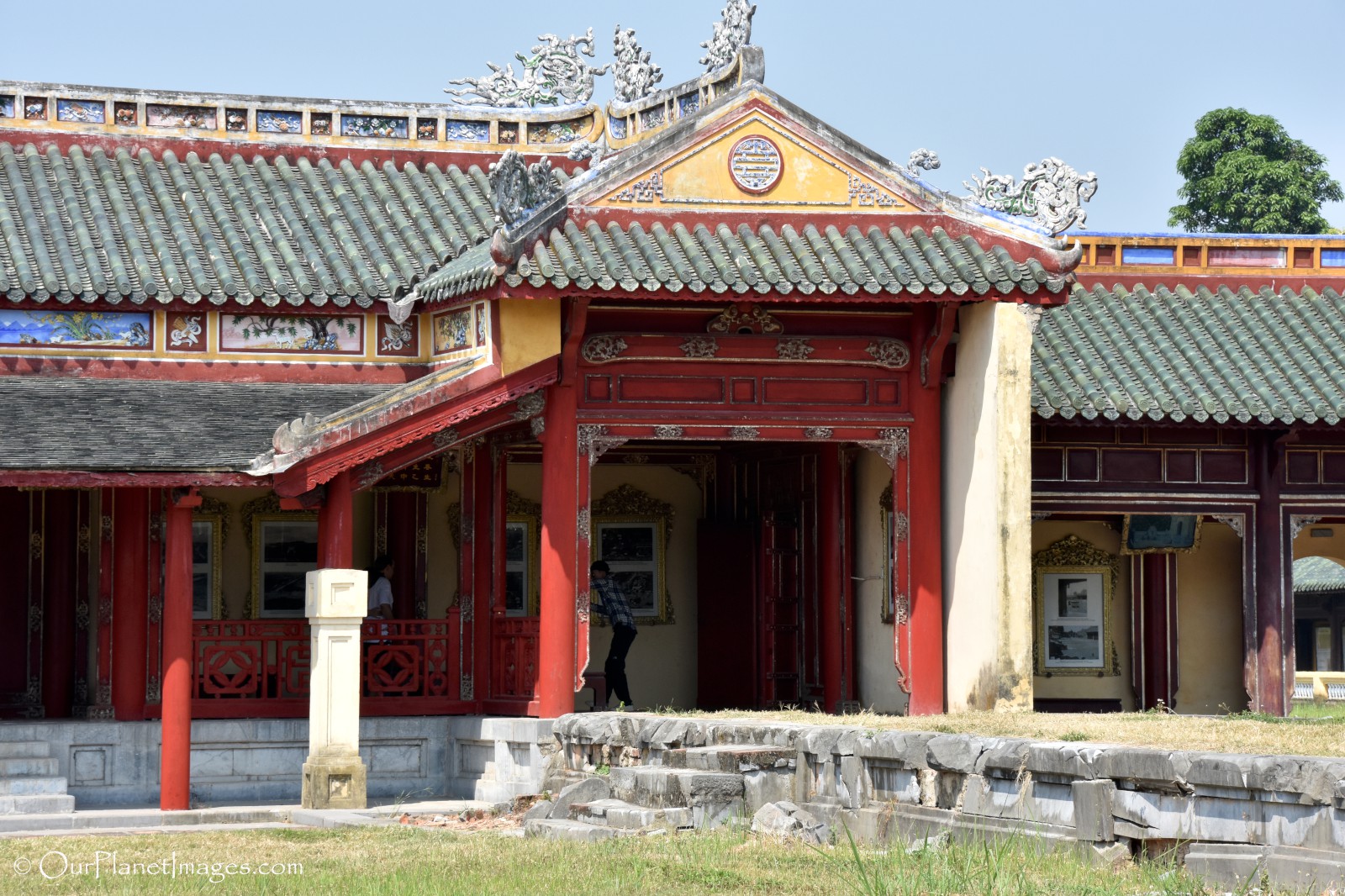
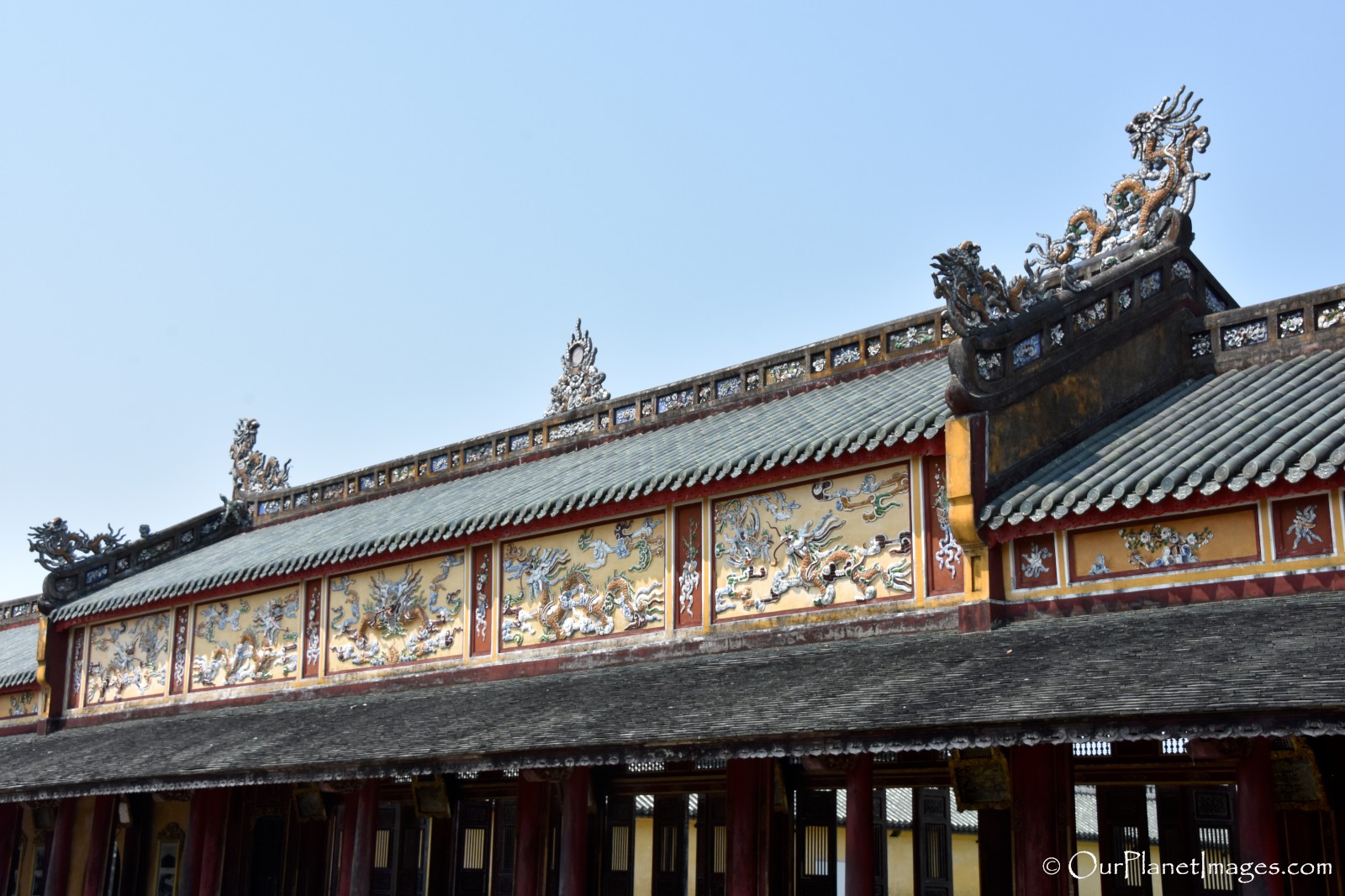
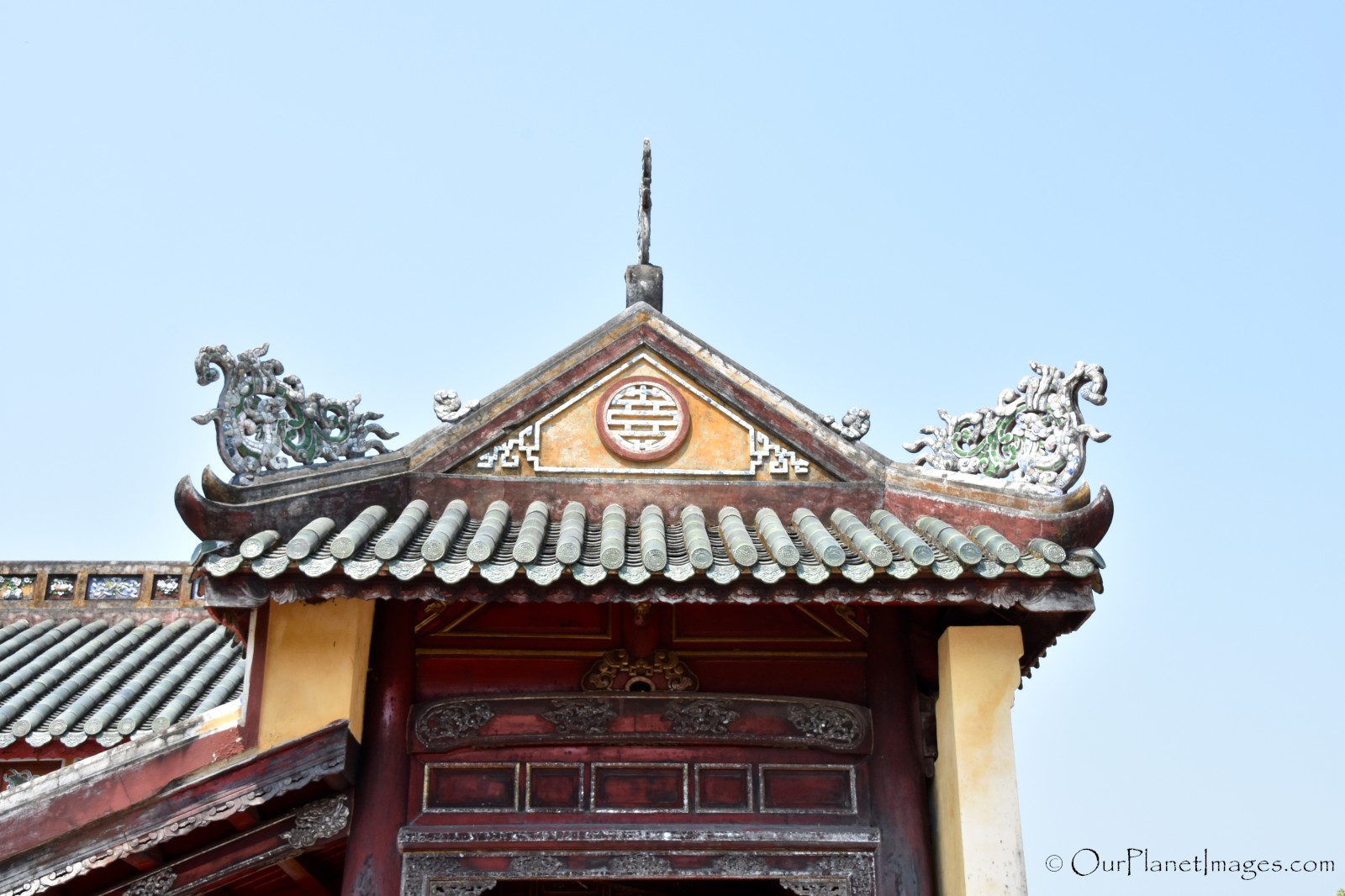
Gate of Hein Lam Pavilion
On each side of the building that are just mentioned, which are located in the central axis of the Imperial City, are other important sections of the complex. At the front of the complex on the left side of the Ngo Mon Gate is the Hien Lam Pavilion and the To Mieu Temple. The entrance to the Hein Lam Pavilion is through the gate shown below.
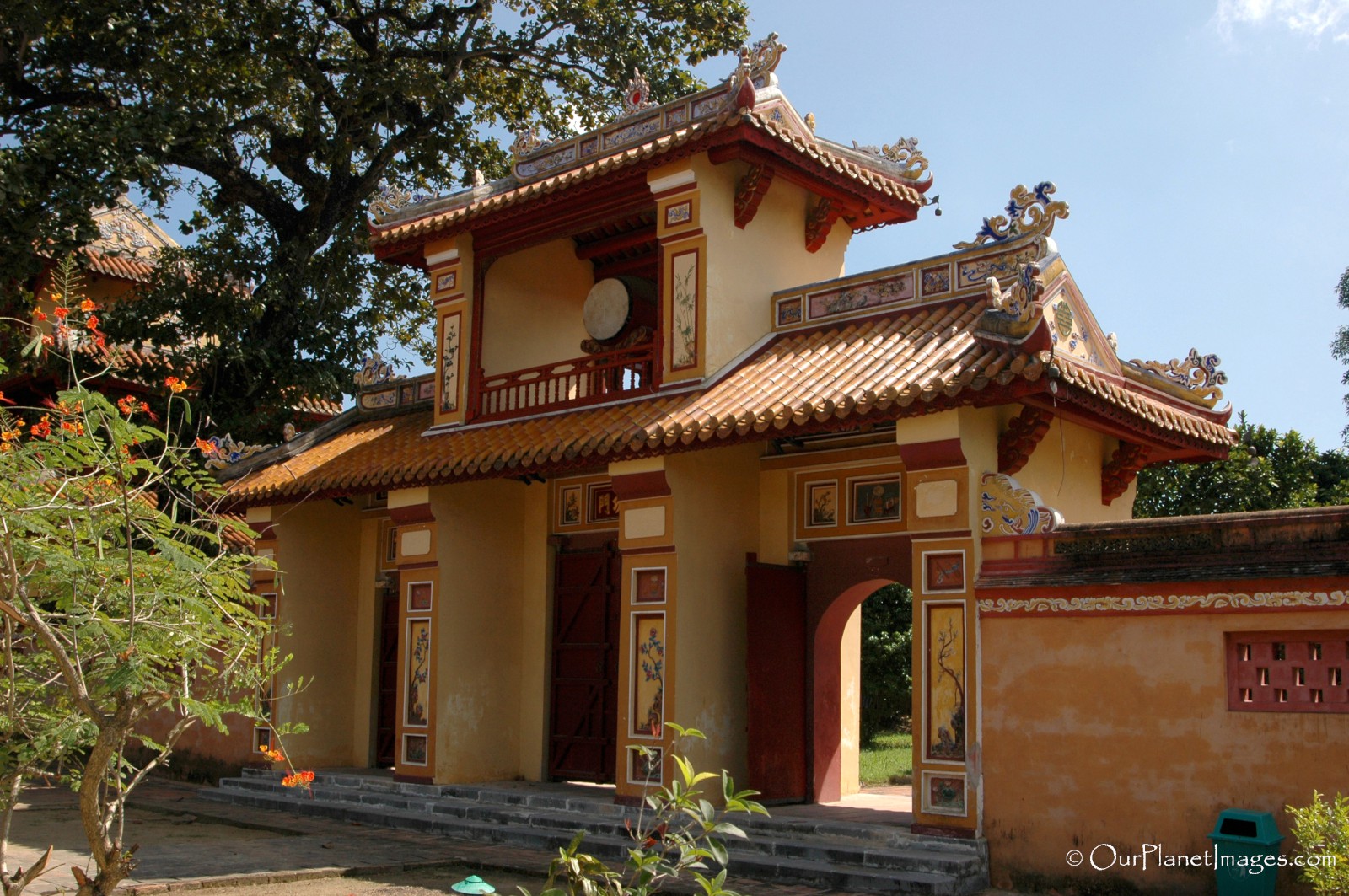
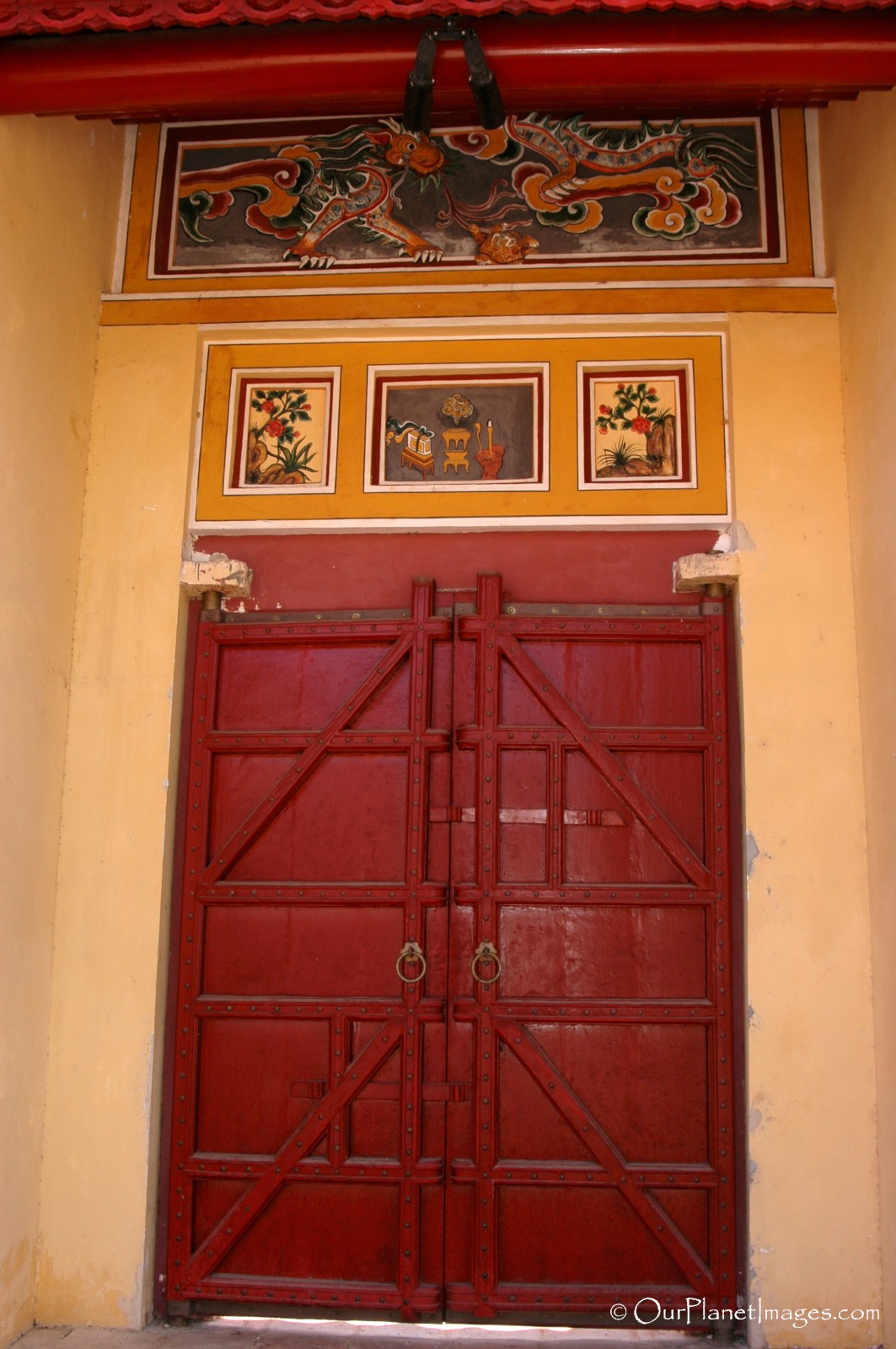
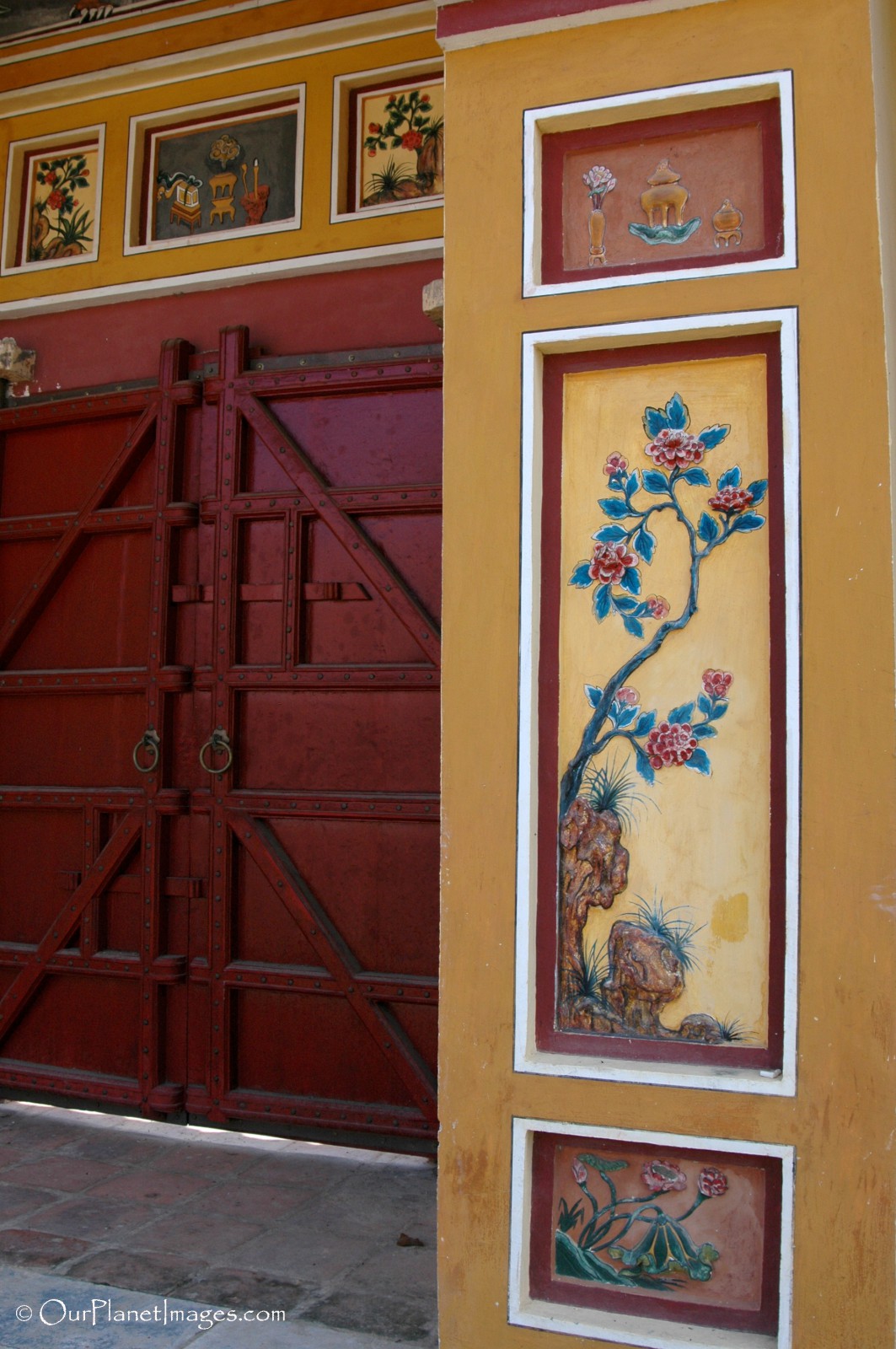
Hien Lam Pavilion and To Mieu Temple
In front of the Hien Lam Pavilion are nine dynast urns that honor the nine emperors that completed their reigns. The urns are about 2 meters high and weigh around 2 tons each.
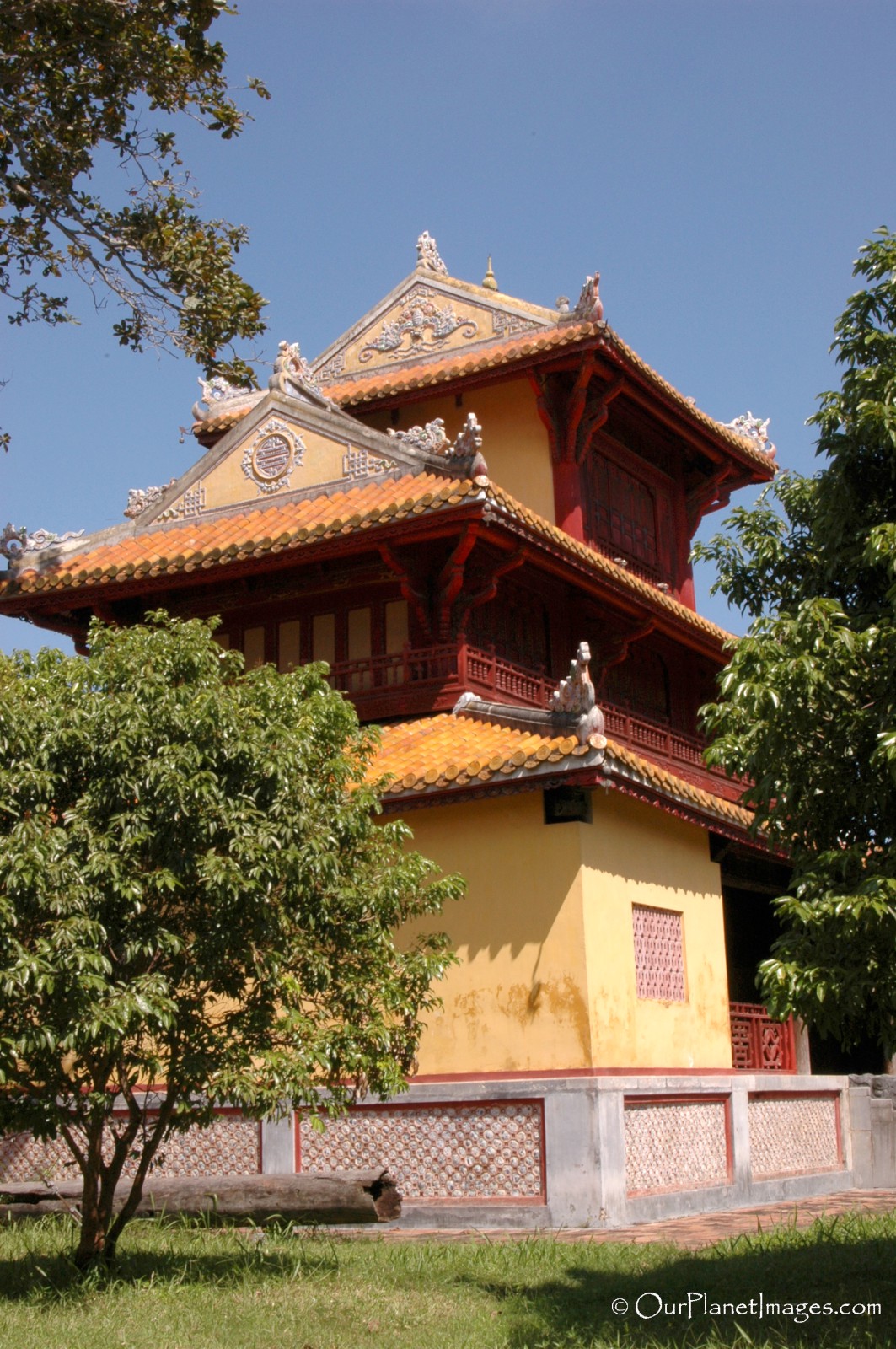
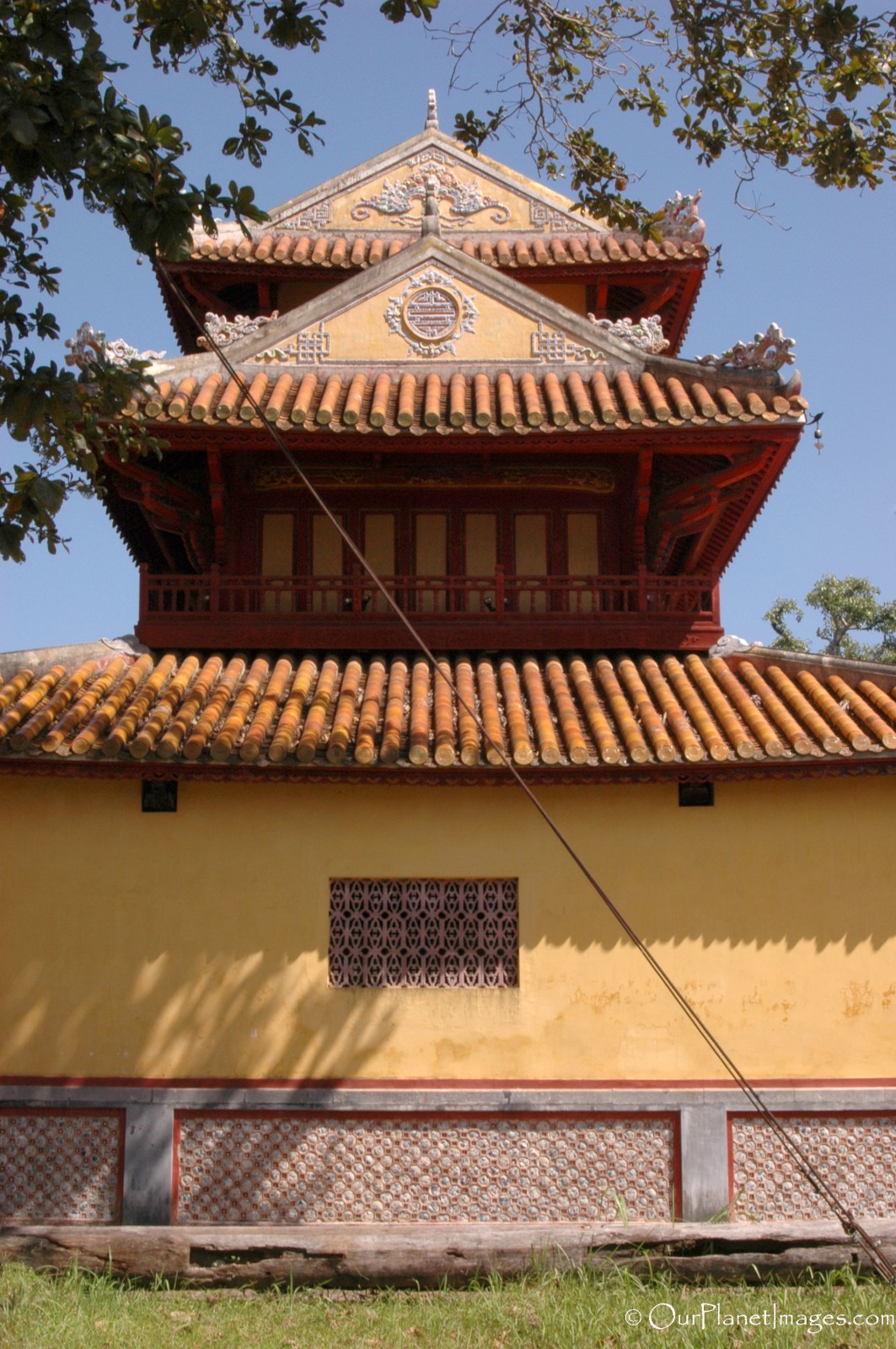

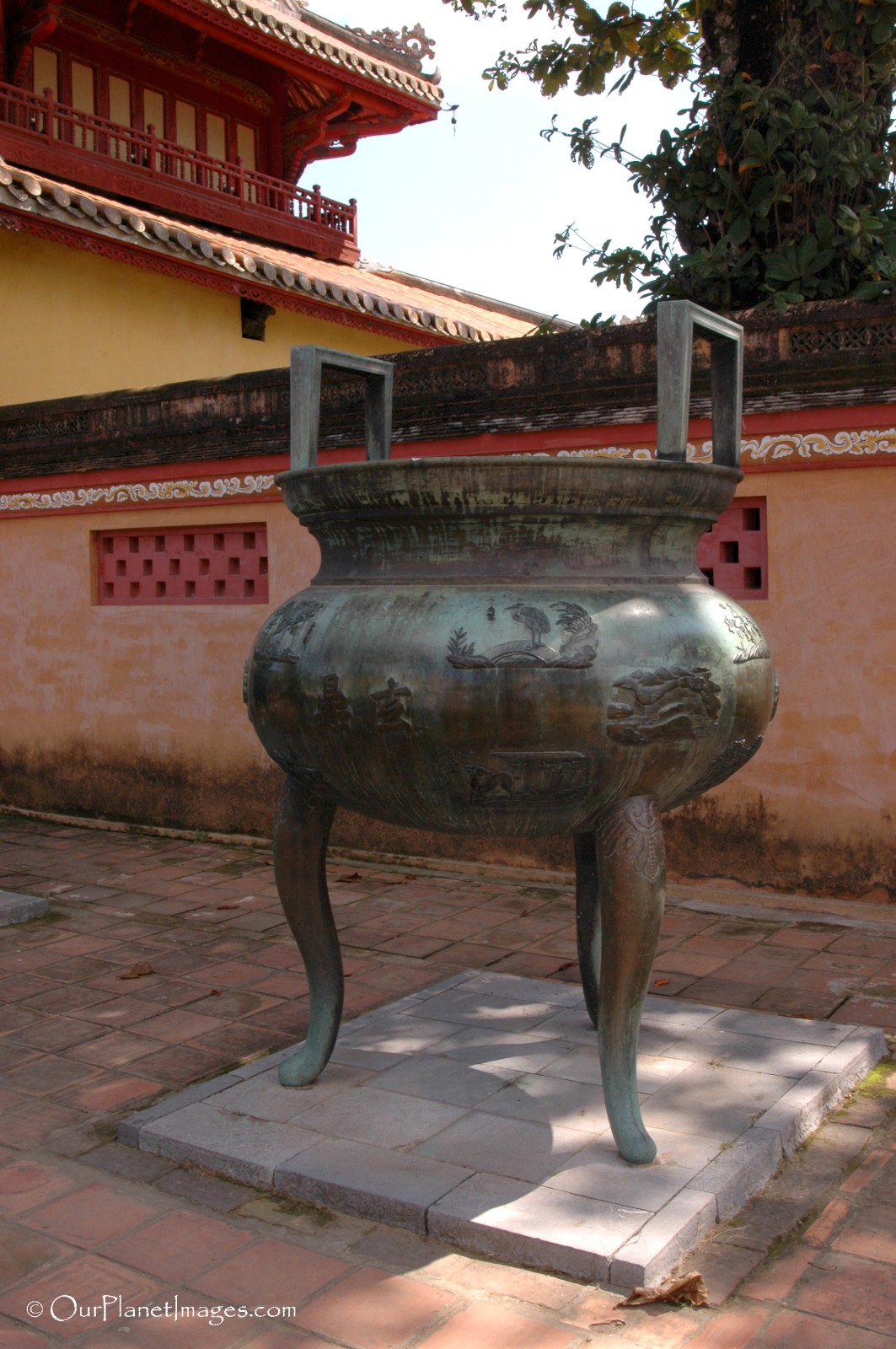
West Gates
On the west side of the Imperial City are two entry gates that are shown below.
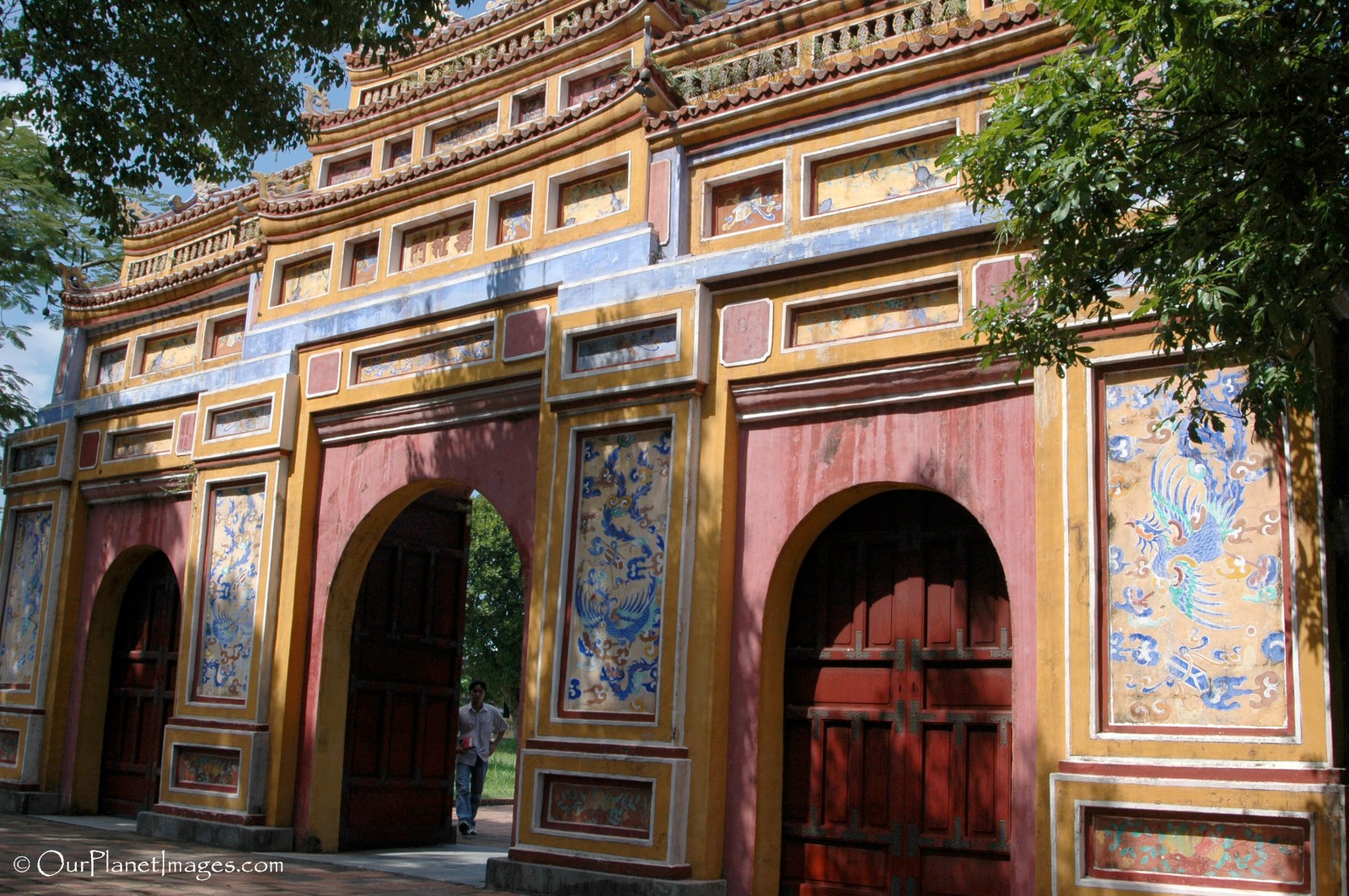
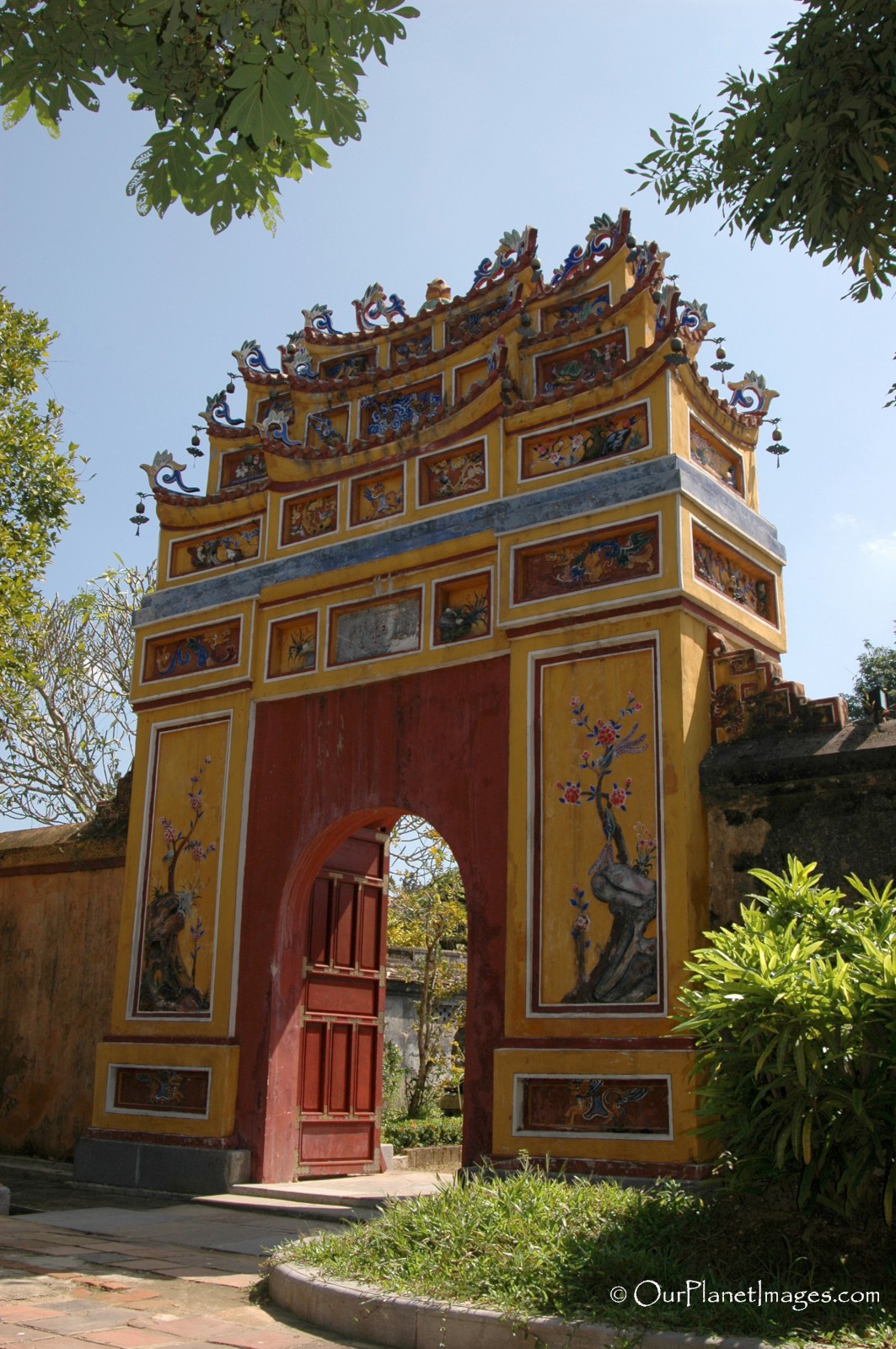
Dien Tho Residence and Truong Do Pavilian
The Dein Tho Residence is a rectangular complex that originally consisted of 10 buildings but now only a few building remain. Entering through a small gate lead to what looks like a traditional house with a small pond around a portion of the house. This area is now converted into a small café.
A larger gate leads to two story building that is now a museum with photo exhibition that show the earlier use of the residence complex and an exhibition of royal robes.
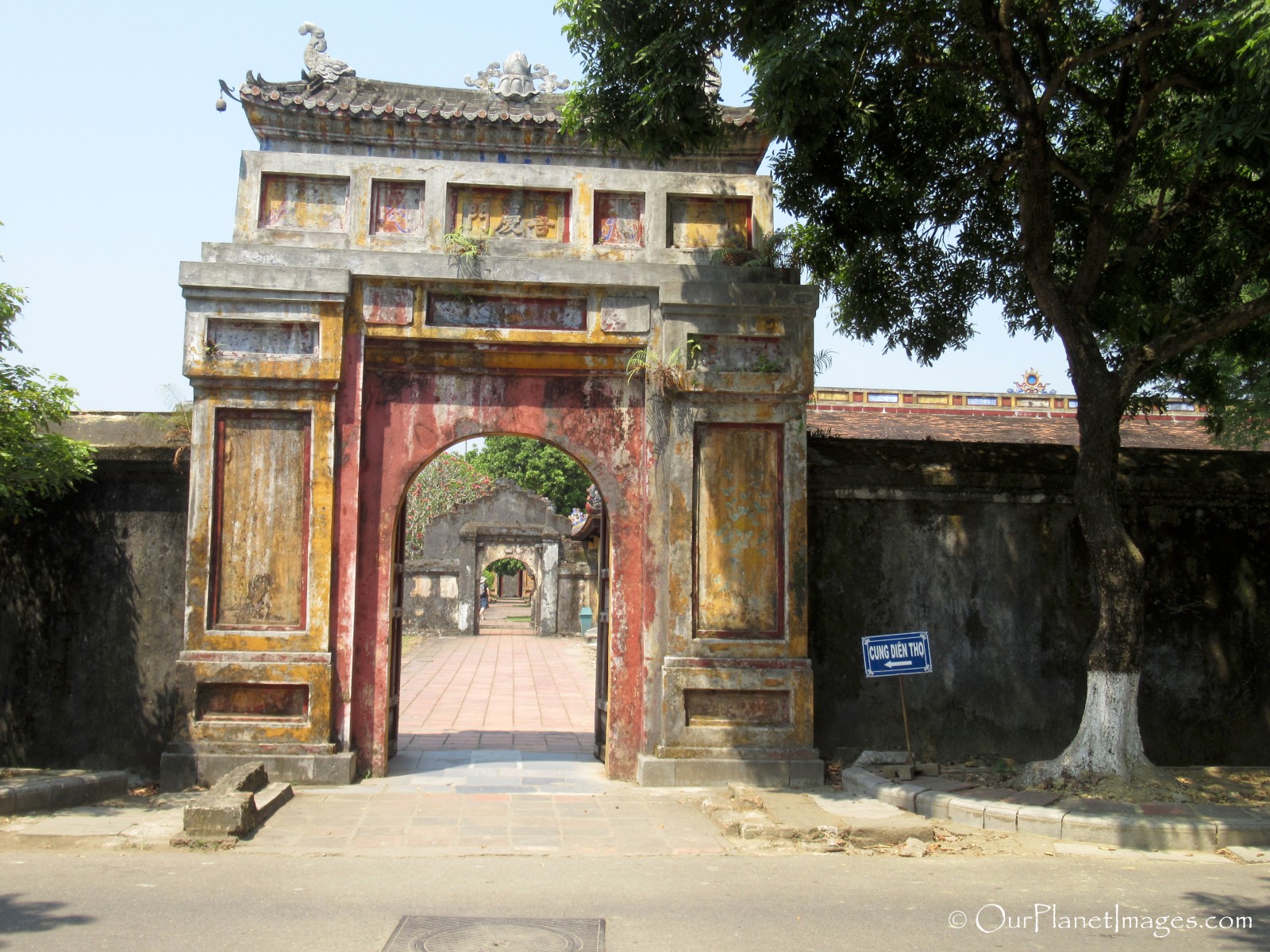
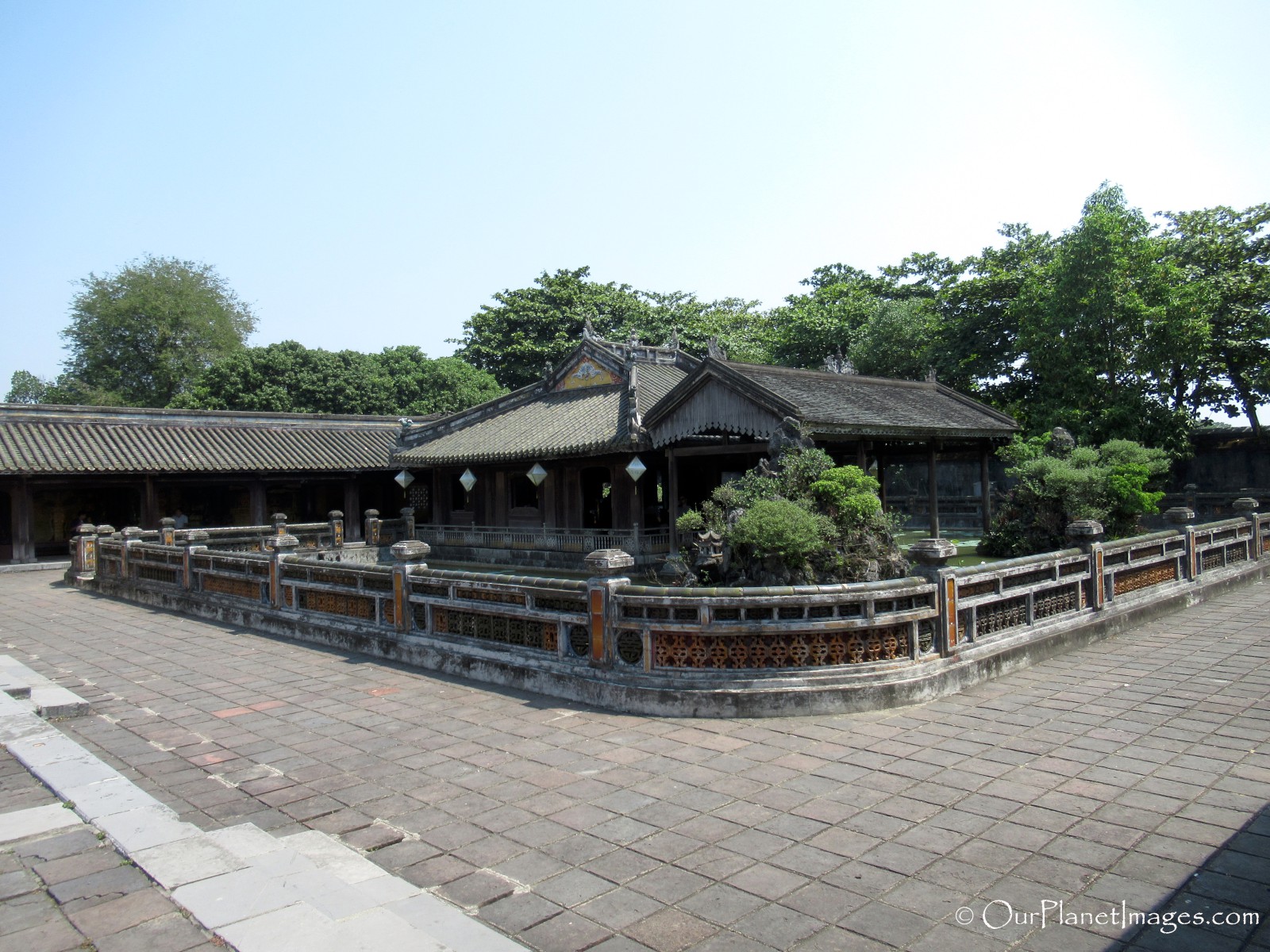
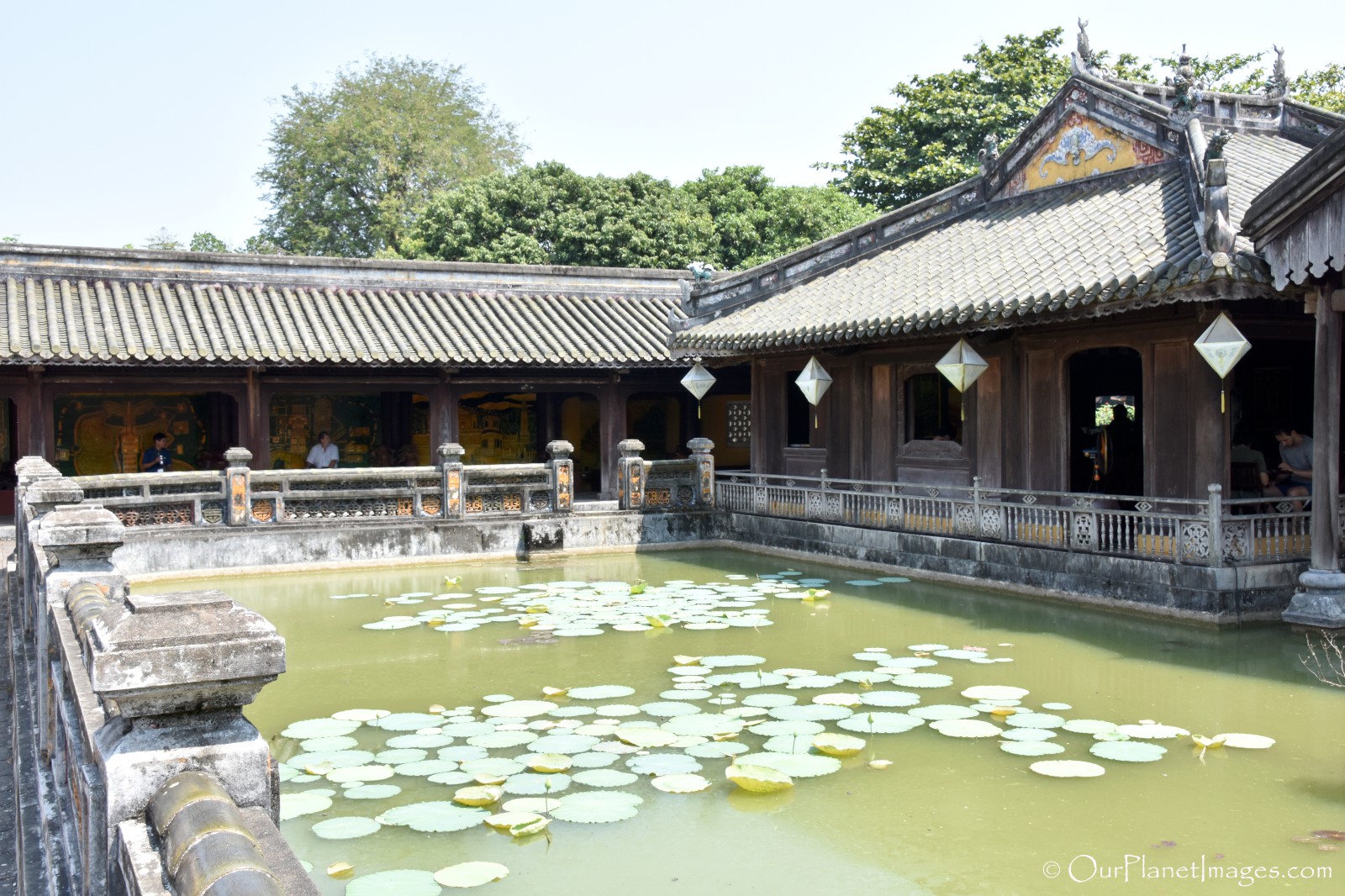
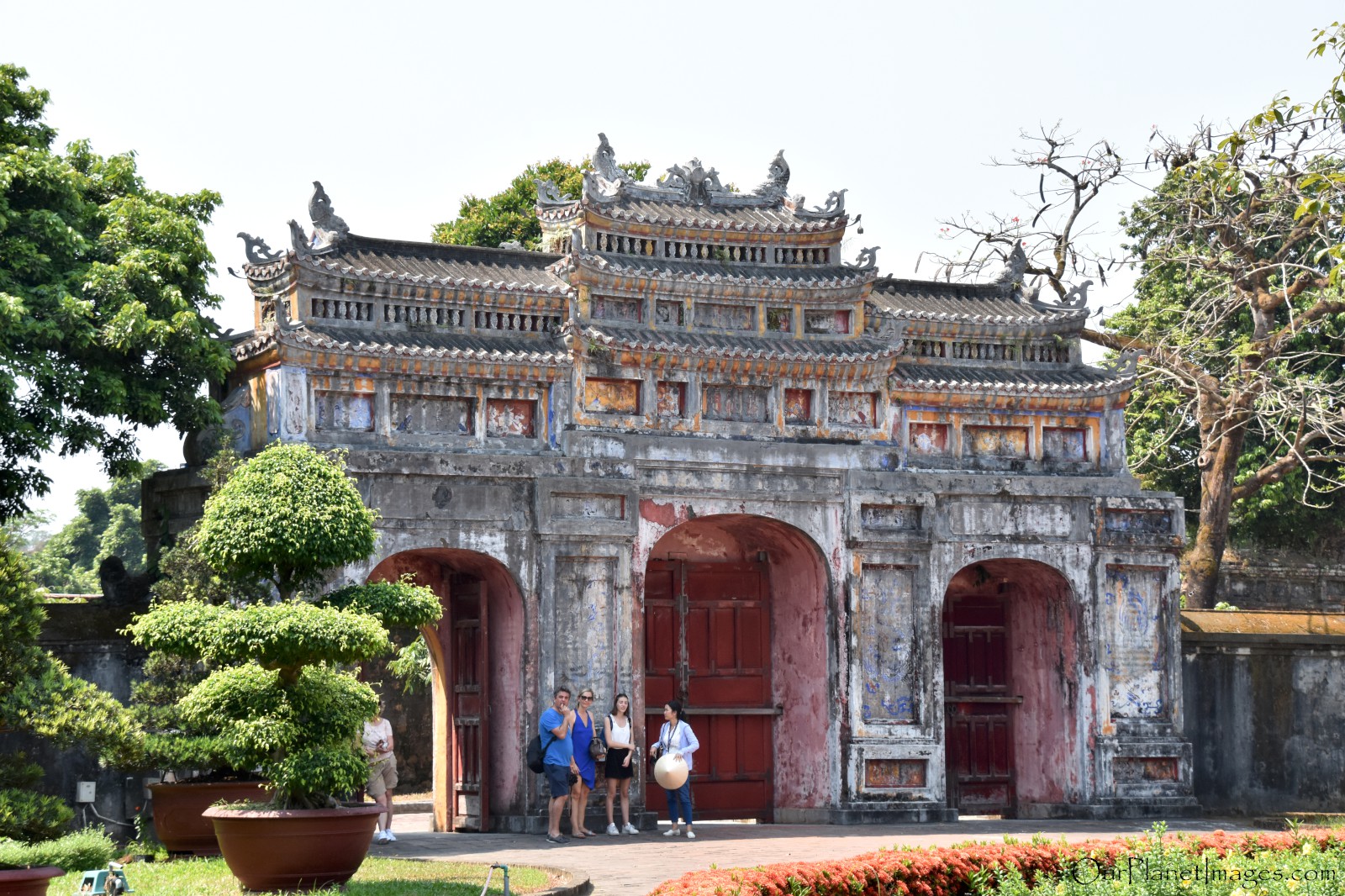
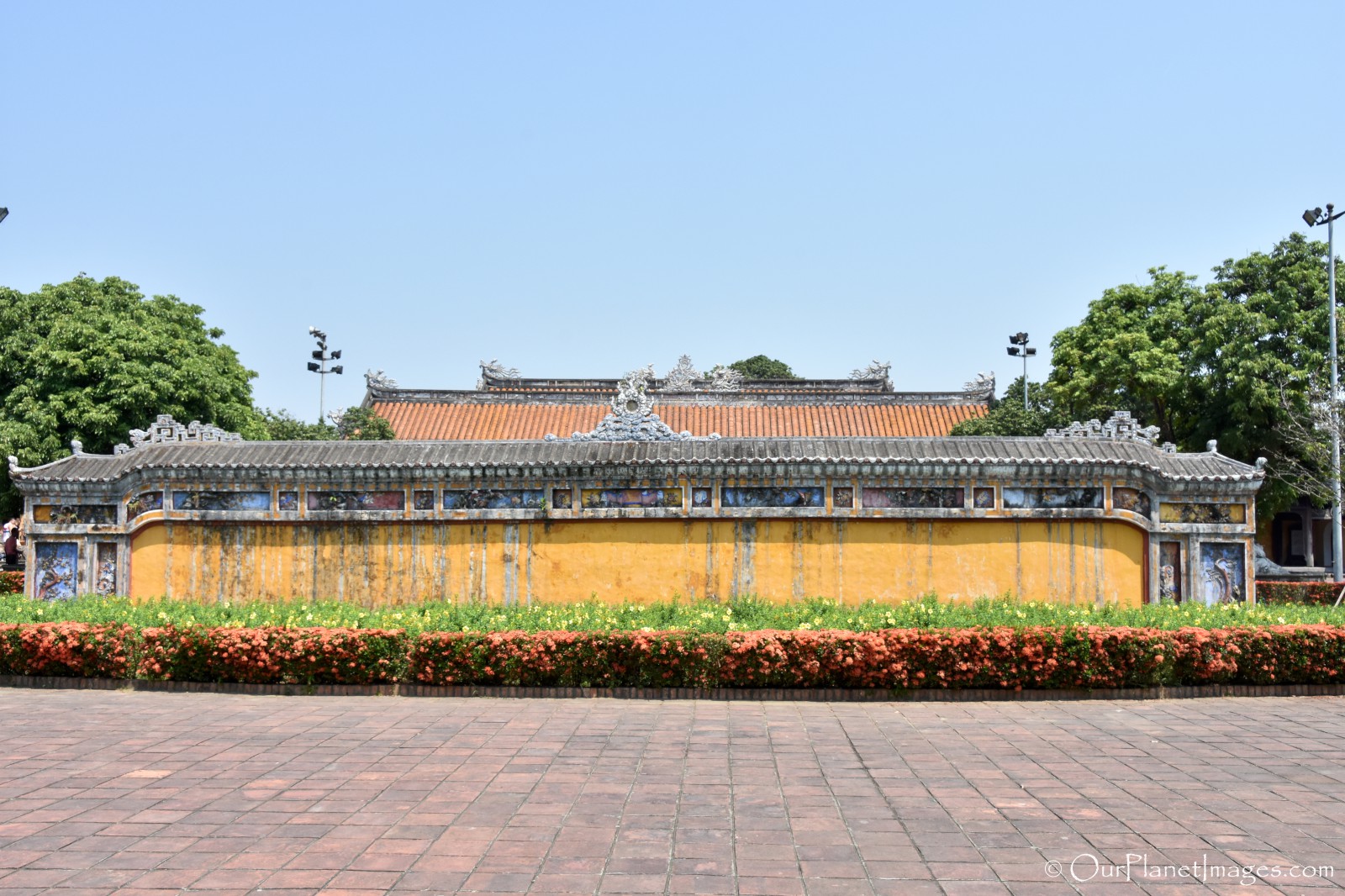

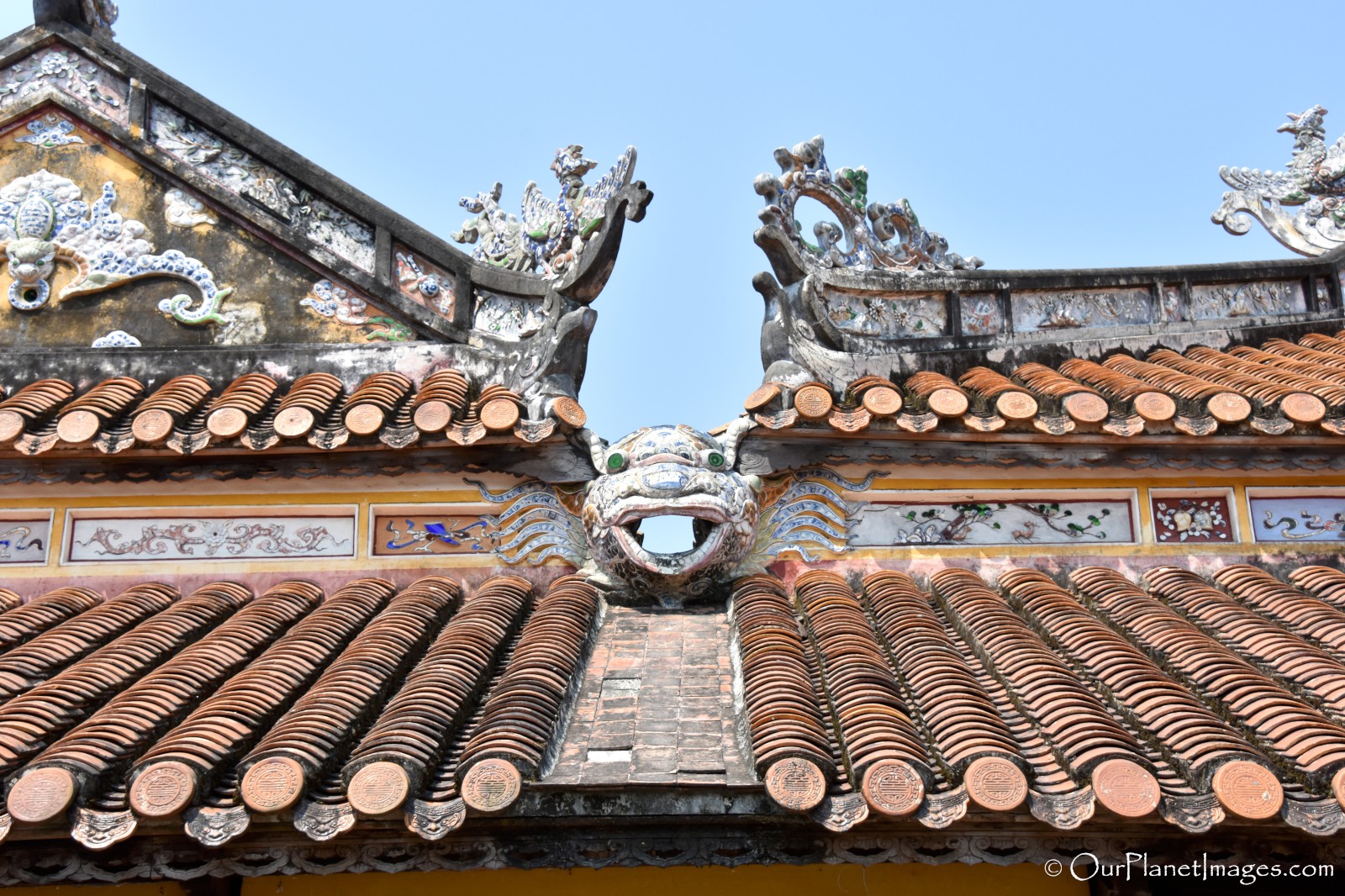
Statues and other features in the complex
Scattered around the complex are statues of dragons, two gazebos and other interesting features. Some of these are shown in the photos below.

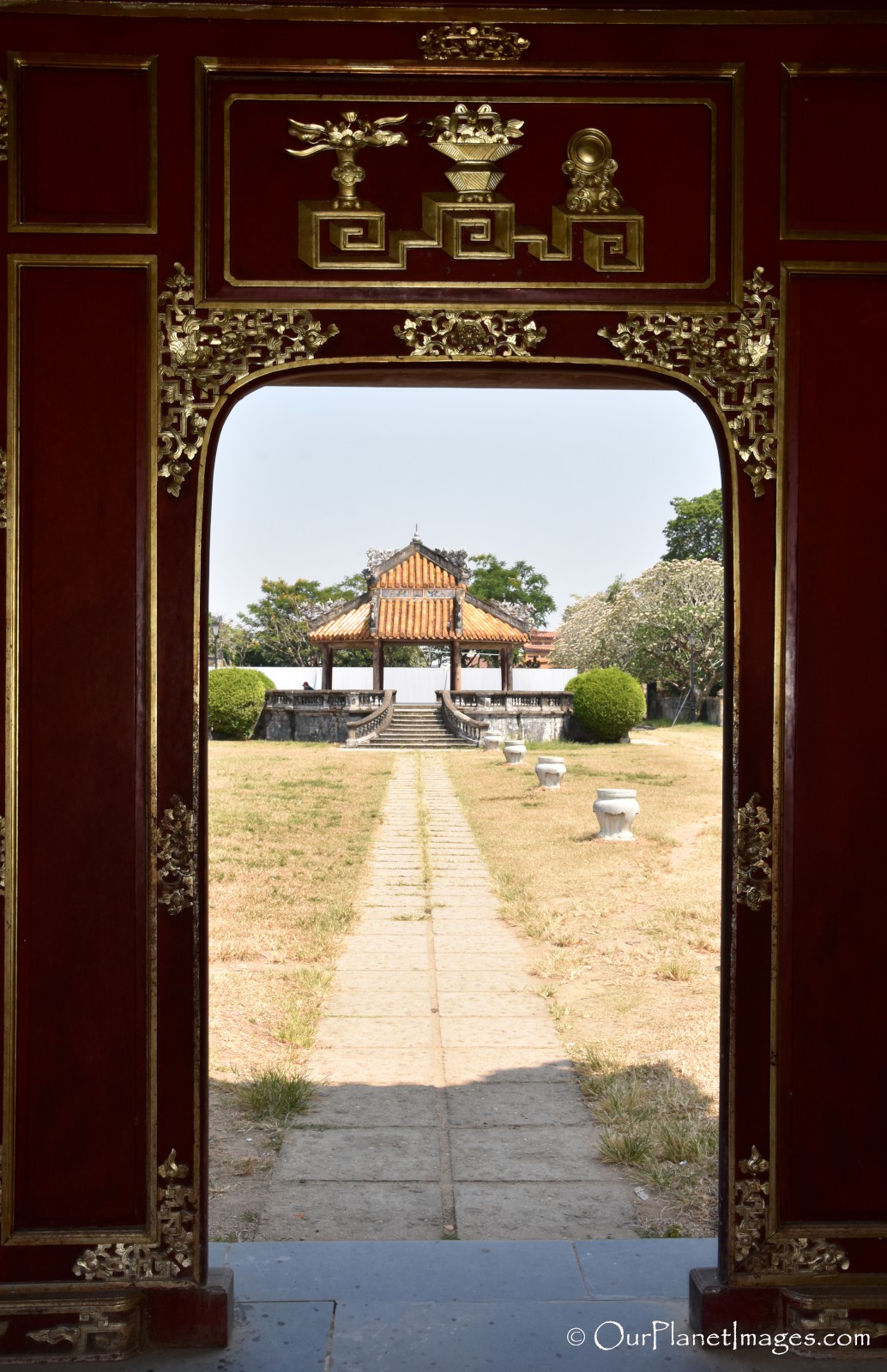
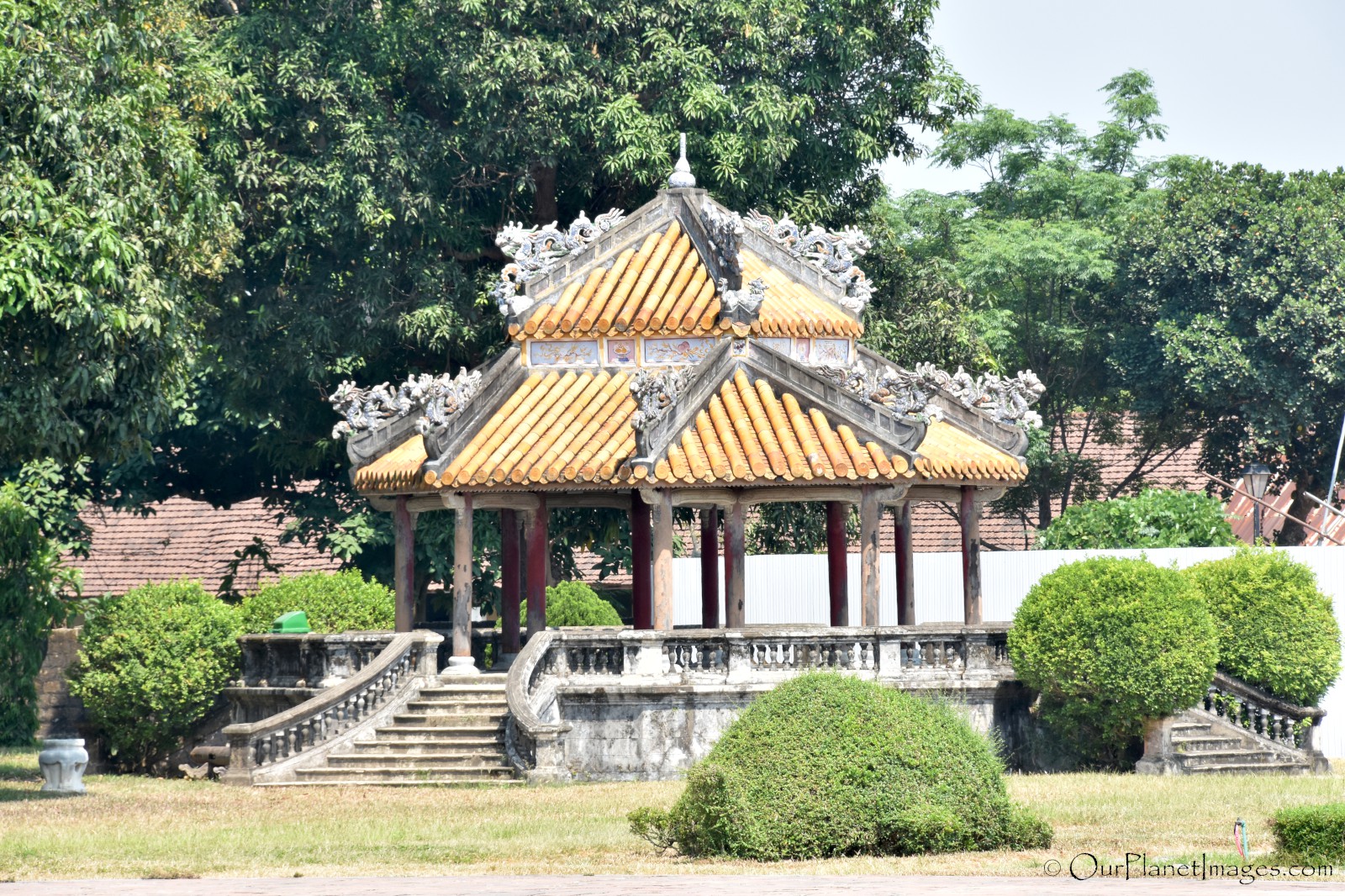


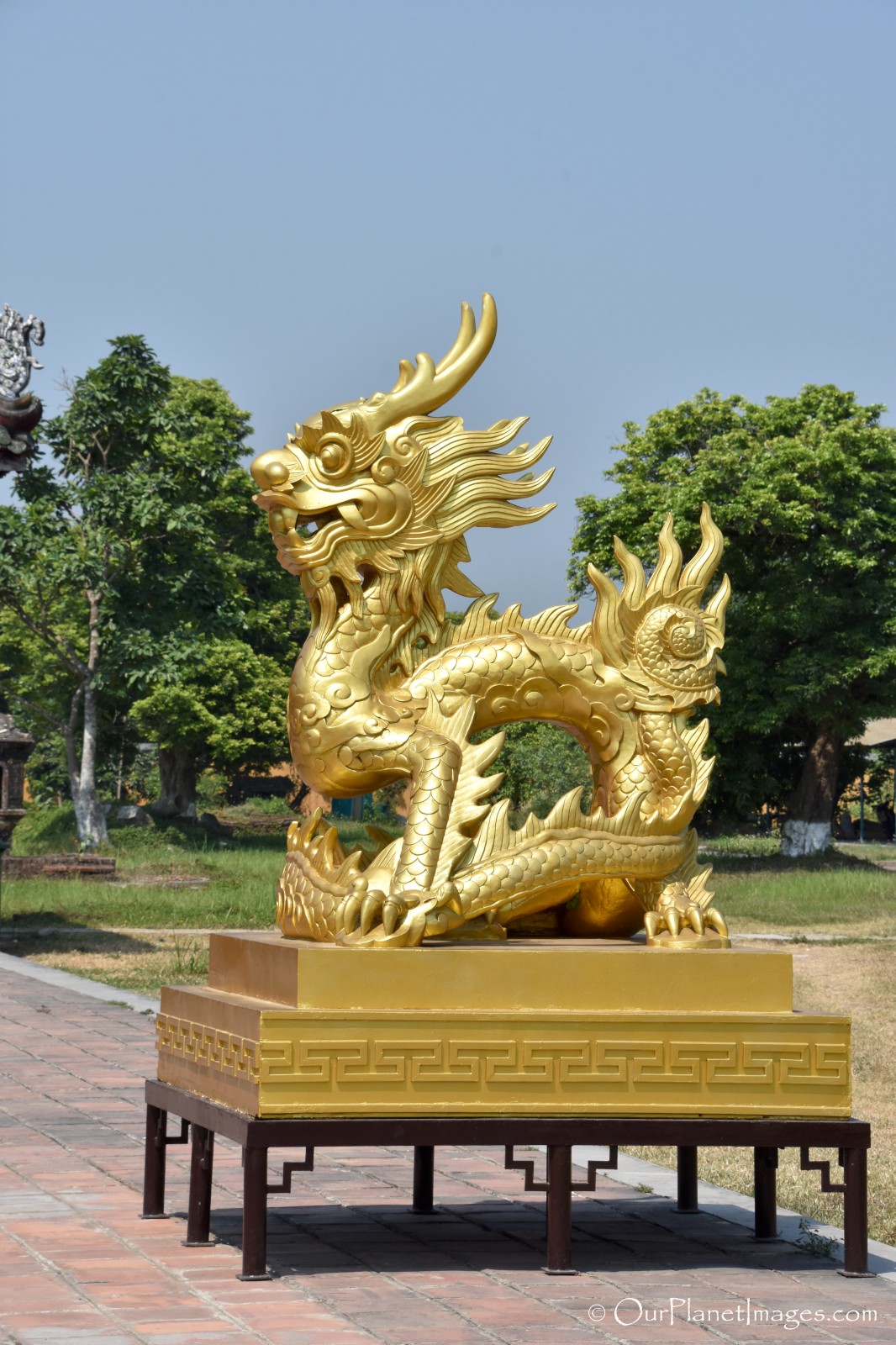
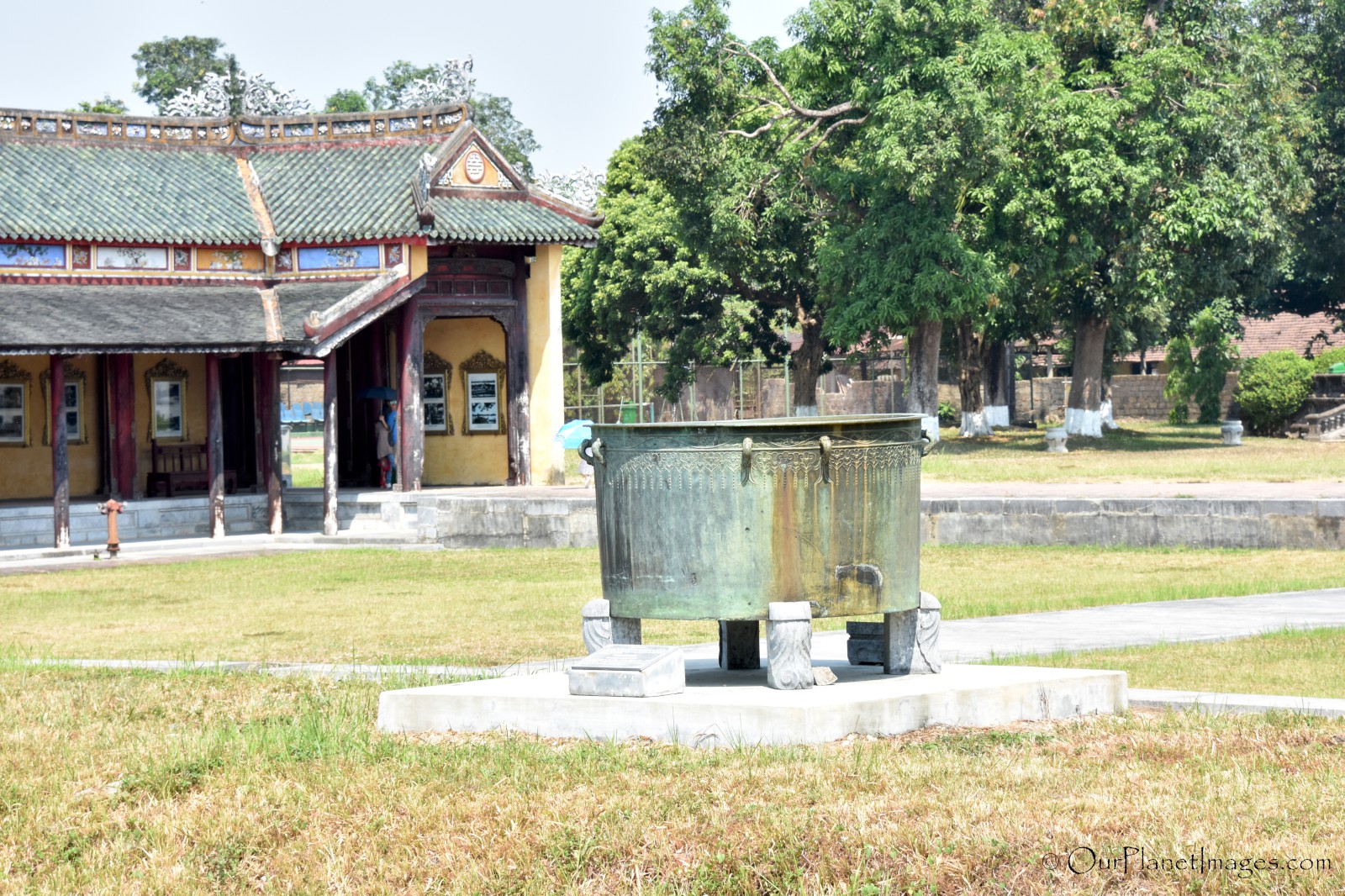
Royal treasury building and east gate
Near the east gate is the old Royal Treasury Building. In front of the building is an exhibit of lanterns and traditional Vietnamese hats that were painted with colorful artwork.
The final photo is of the east gate where we exited the complex.
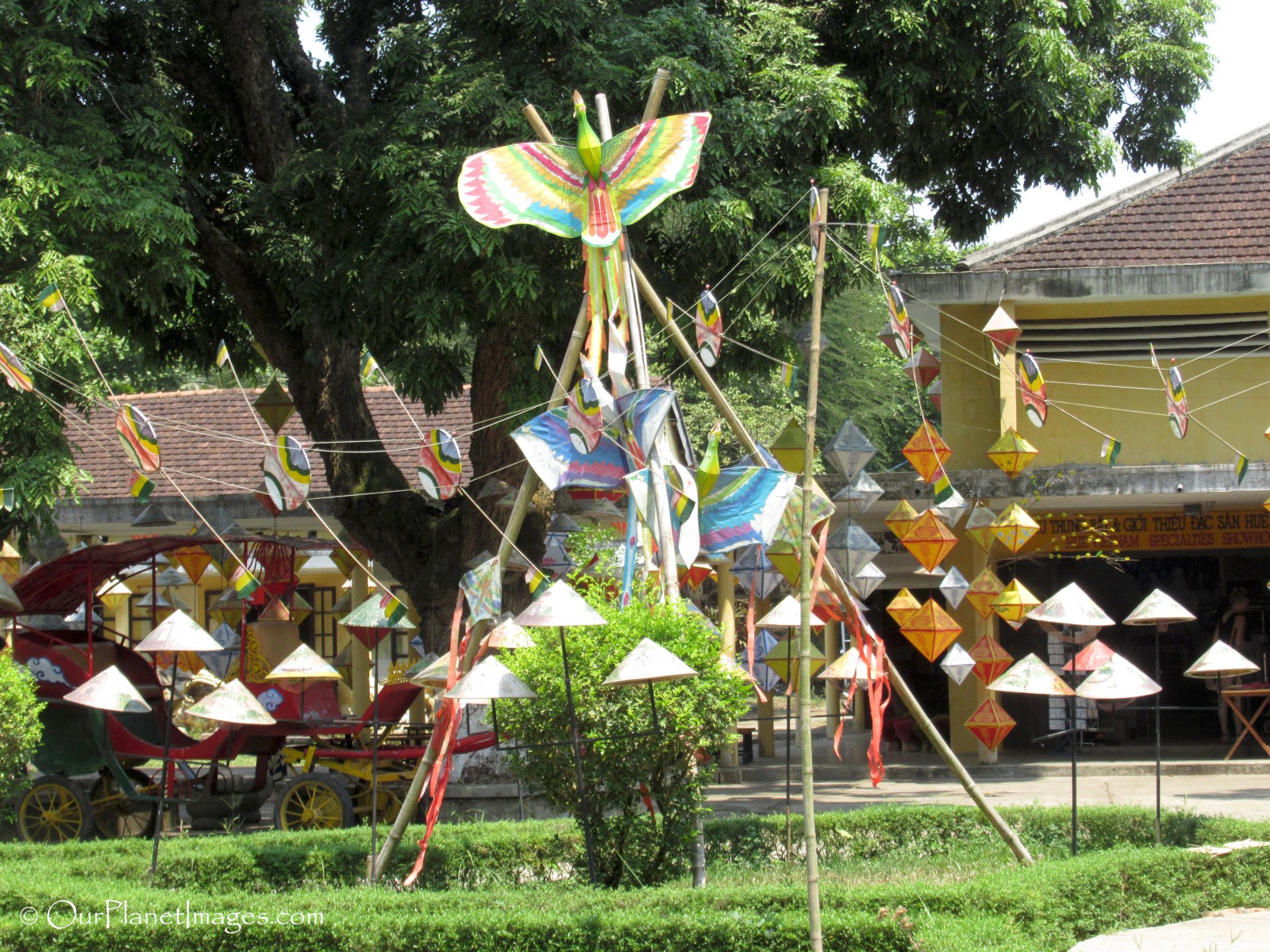

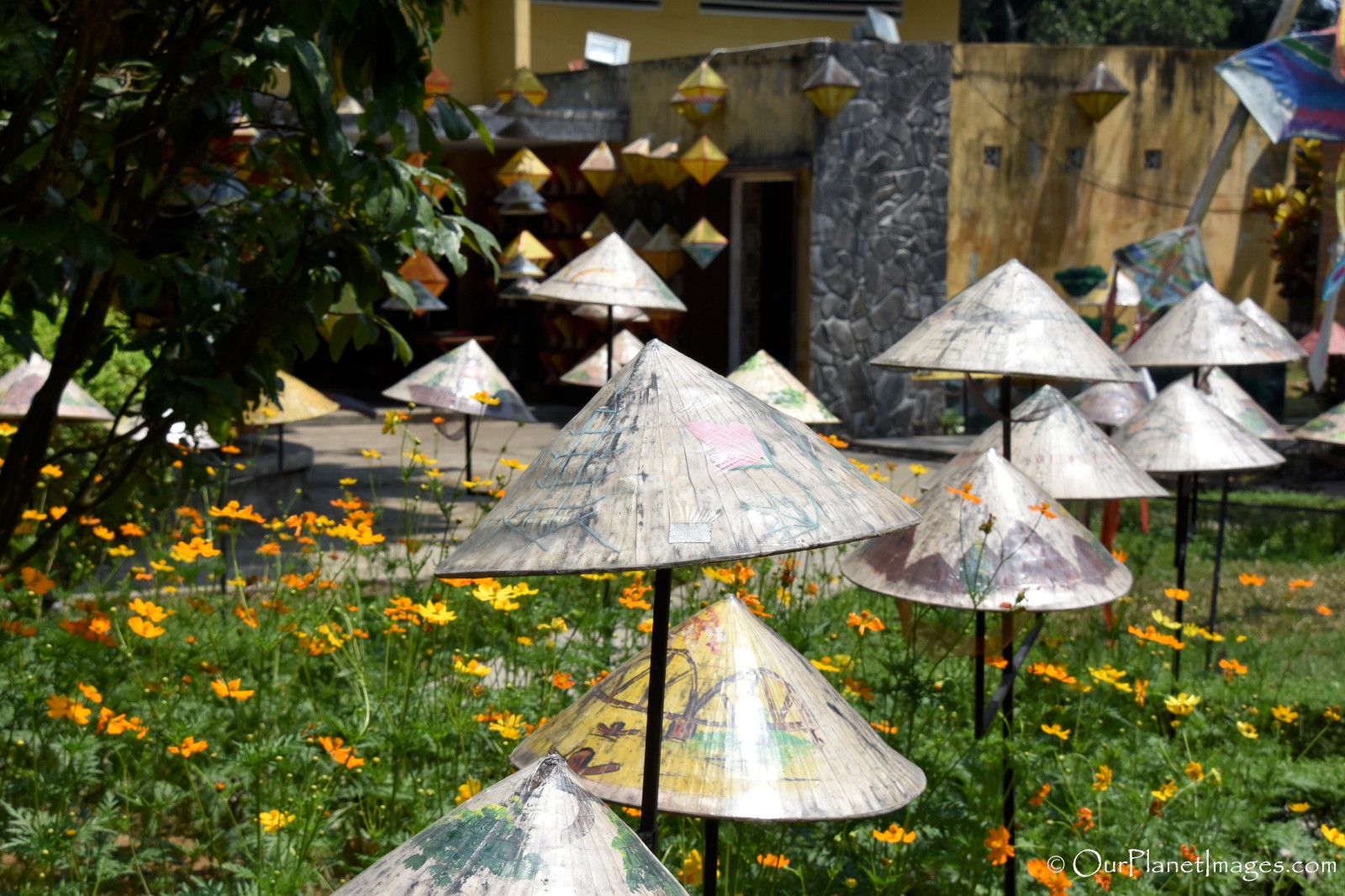


The Dust on My Shoes
The Hue Citadel and Imperial Palace is a large complex and it is probably the most popular tourist attraction in Hue. I have been to Hue on two of my visits to Vietnam and both times I have visited the Citadel and Imperial Palace but there is so much to see that in my two visits there are still things that I have miss seeing.
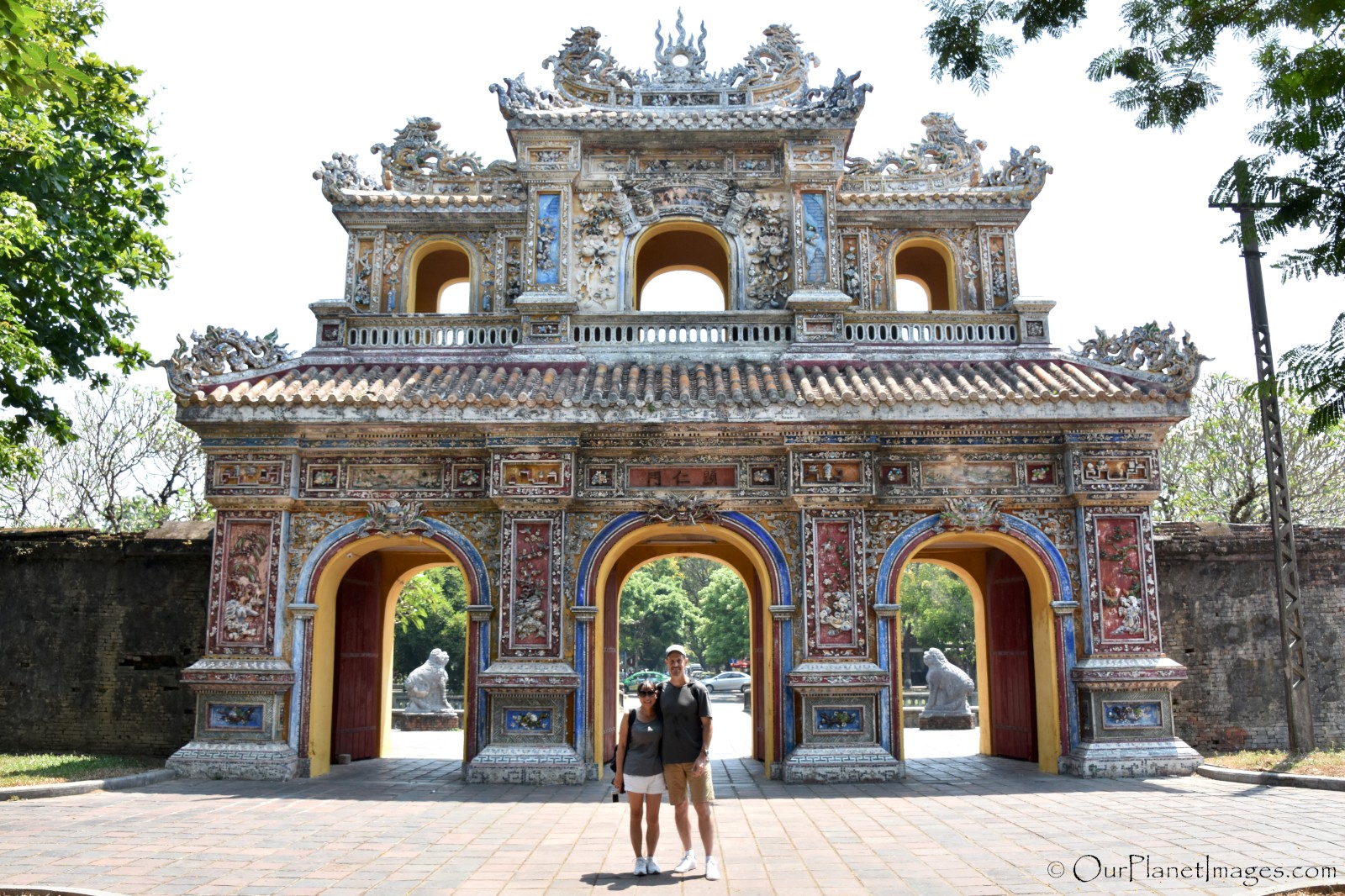
Visiting the Hue Citadel and Imperial Palace reminded me a lot of some of the other royal palaces that I have visited in Asia like the Forbidden City in Beijing, China, the Grand Palace in Bangkok, Thailand and the palaces in Seoul, South Korea.
Visiting large scale palaces always amaze me. They are so large and so much of the little details in the architecture are overwhelming. Fine details were common for the royal palaces during the time they were built but modern architecture doesn’t have time consuming architectural details they are sleek and uncluttered.
When visiting large scale palaces it is easy to become amazed by the size of the complex and many people overlook the small details in the architecture. The fine architectural details of royal palaces are just as impressive as the entirety of the palace complex.
